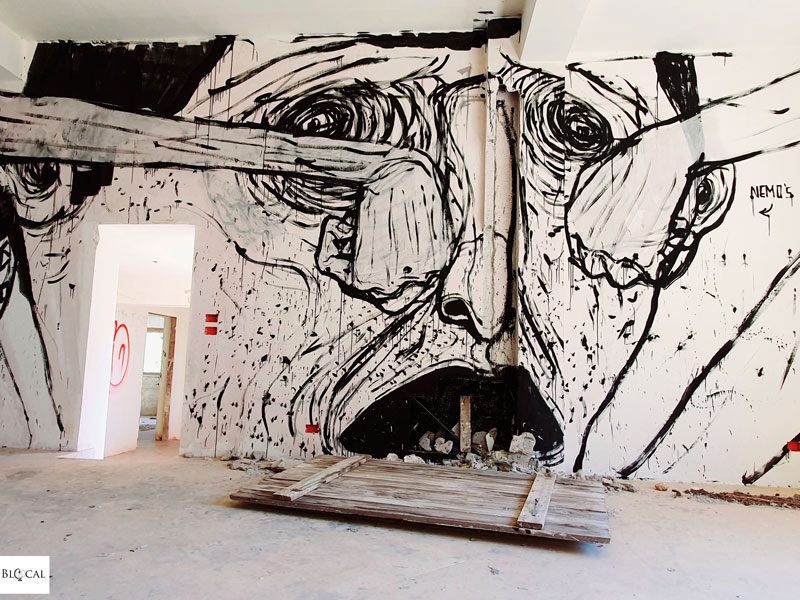Saying that Palermo is worse off is a gross understatement. Palermo’s palaces are, at best, beaten up, but in any other scenario they’re outright shattered. Yet their crumbling facades, which the North African sun and the sea breeze keep eroding daily, are what make Palermo so seductive.
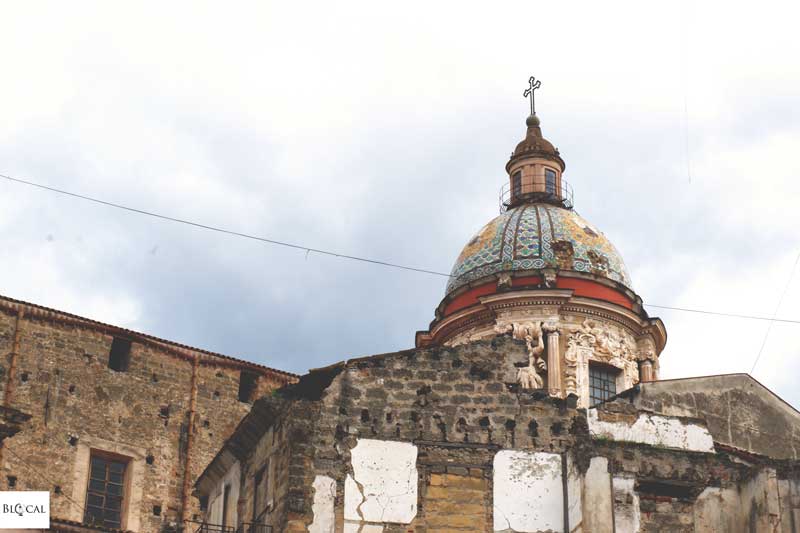
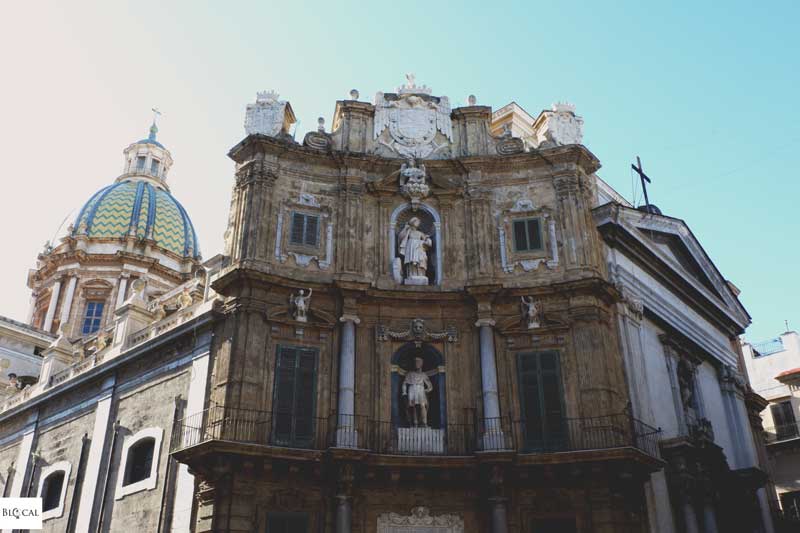
- Street Art in Palermo > Ballarò
- Eating out in Ballarò
- Street Art in Palermo > Kalsa
- Eating out in Kalsa
- Street Art in Palermo > Capo
- Eating out in Capo
- Street Art in Palermo > Vucciria
- Eating out in Vucciria
- Street Art in Palermo > Borgo Vecchio
- Eating out in Borgo Vecchio
- Street Art in Palermo > Cantieri Culturali alla Zisa
- More street art and other super cool things to see in Palermo
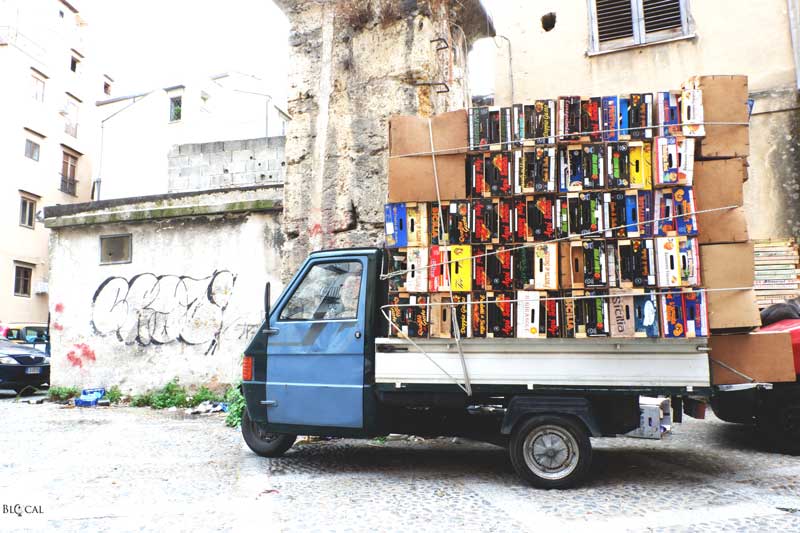
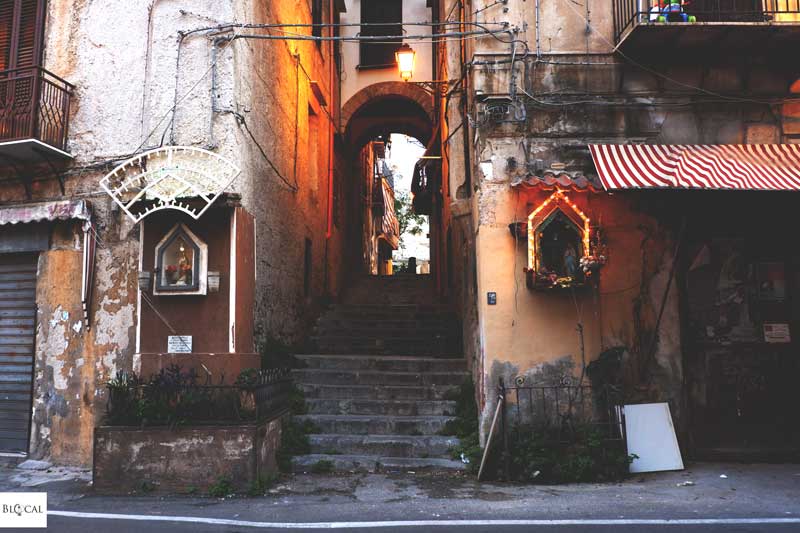
Life is chaos in Palermo, and I couldn’t help but find it comforting after one year living in the over-regulated North of Europe. Chaos means that anything is possible; Palermo’s streets are made for eating and drinking and smoking and cooking and praying and kissing and talking and running after a ball. They broadcast, nonstop, the marvelous contrast between life and decay.
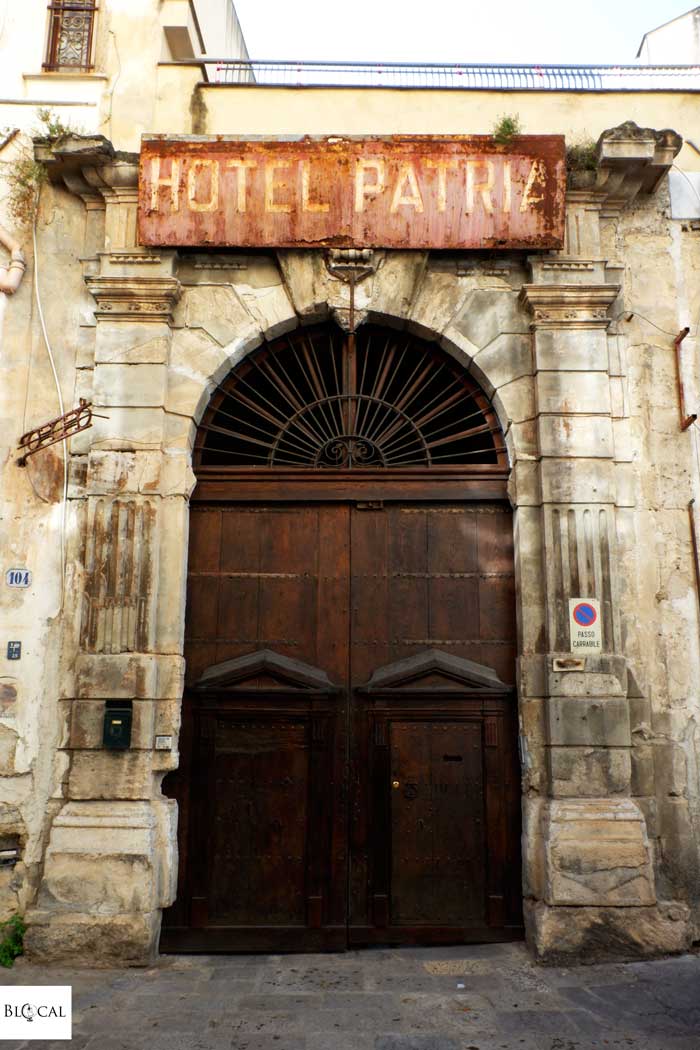
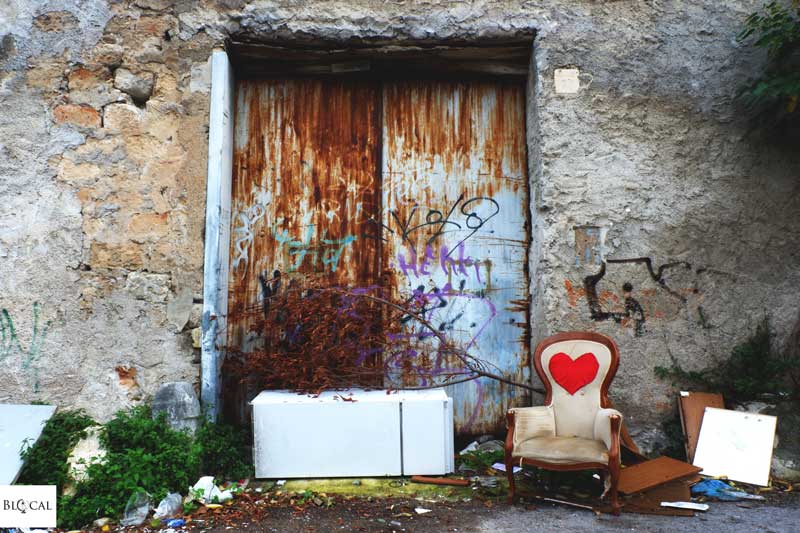
Their use of public space is something I’ve always taken for granted when living in Italy, but being re-exposed to it, to the way Palermitans do it, was refreshing. I was constantly impressed by how much of the everyday conversation goes on the walls of the city, where messages of love are sprayed next to graffiti and street art.
Street art in Palermo is tailored for the people walking past it rather than for Instagram, and as of late, this distinction has become all too relevant for me. I’m sick of the Hollywood-esque drone videos and I grow weary of the long-exposure photos of monumental murals. I like when street art stays at street level.
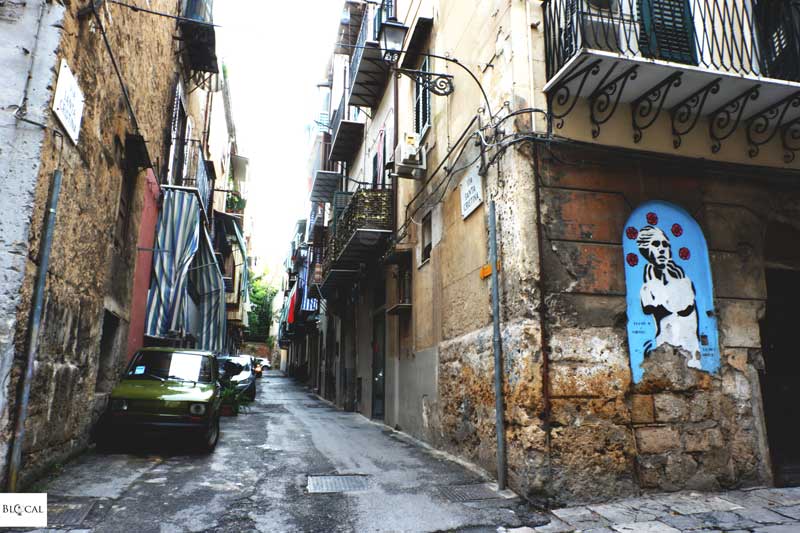
Sometimes these sensational walls look as if they aren’t actually there, despite the monumental size. They don’t seem to be on a real building inhabited by real people. They’re just images, with no authentic support. But in Palermo, despite the walls of its decaying buildings peeling off, street art has found solid support.
I’m fascinated by this genuine street art, by the pieces that talk about the city: the ubiquitous octopus that symbolizes the mafia, Santa Rosalia, the patron saint of the city, the delicious Sicilian cannoli and Palermo’s fishermen can be found everywhere. I like this sensitive street art; it’s rough yet sharp for the message it expresses.
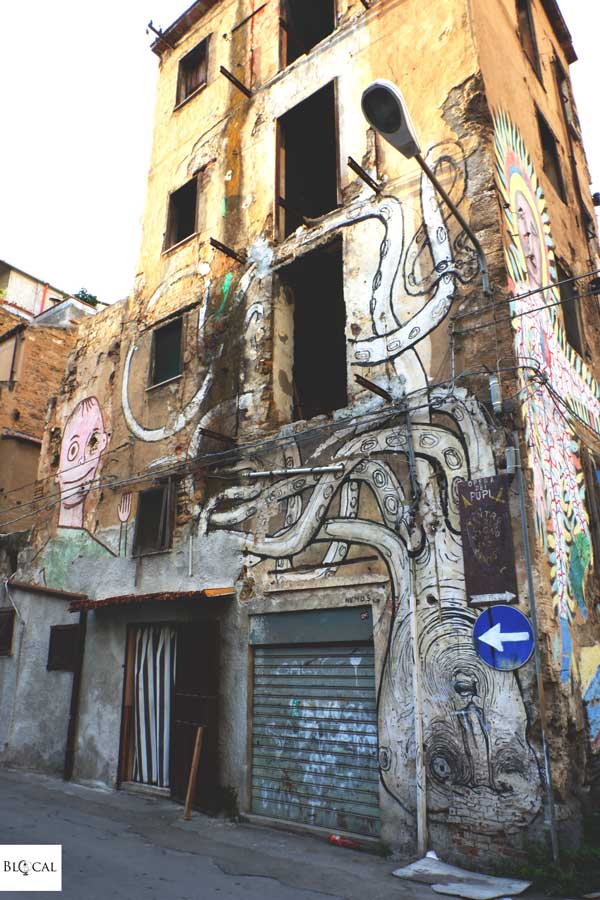
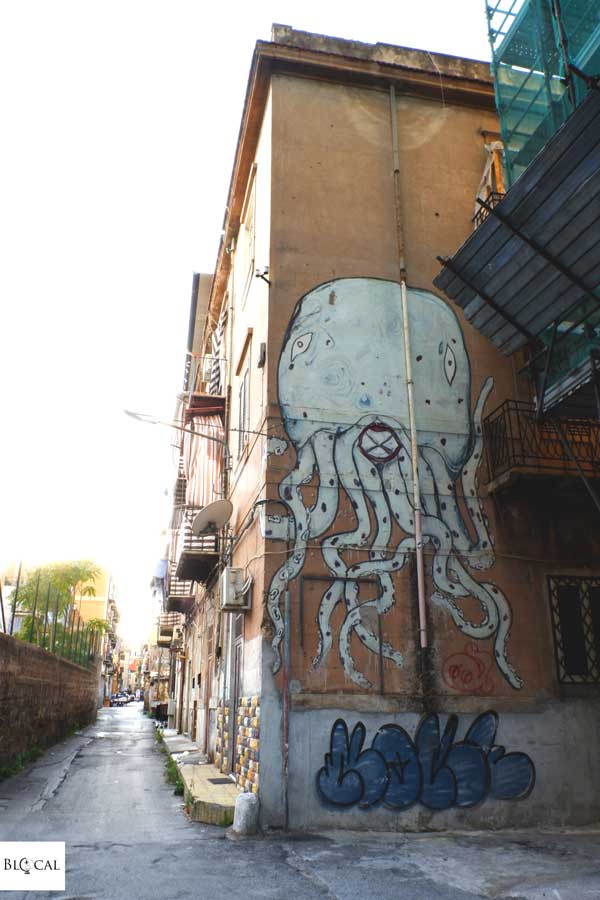
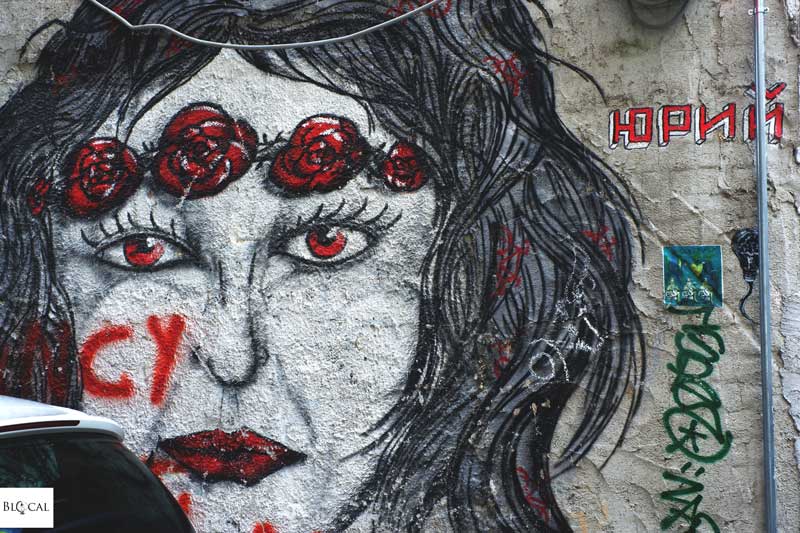
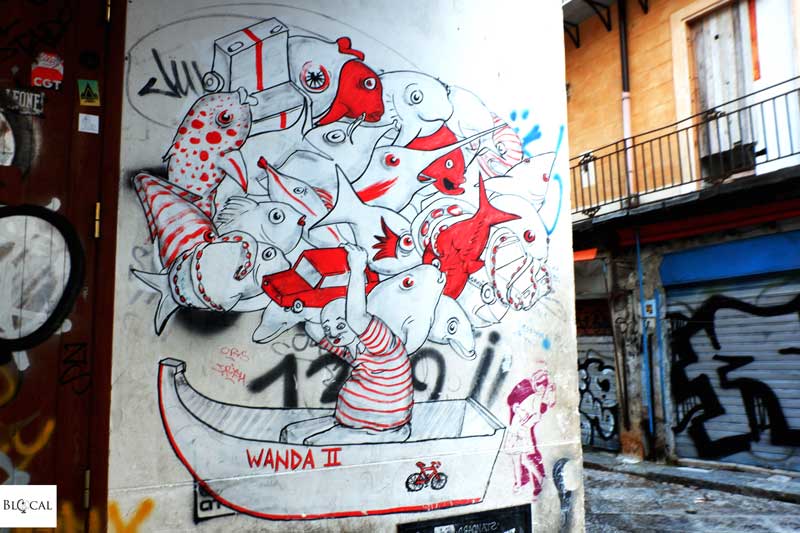
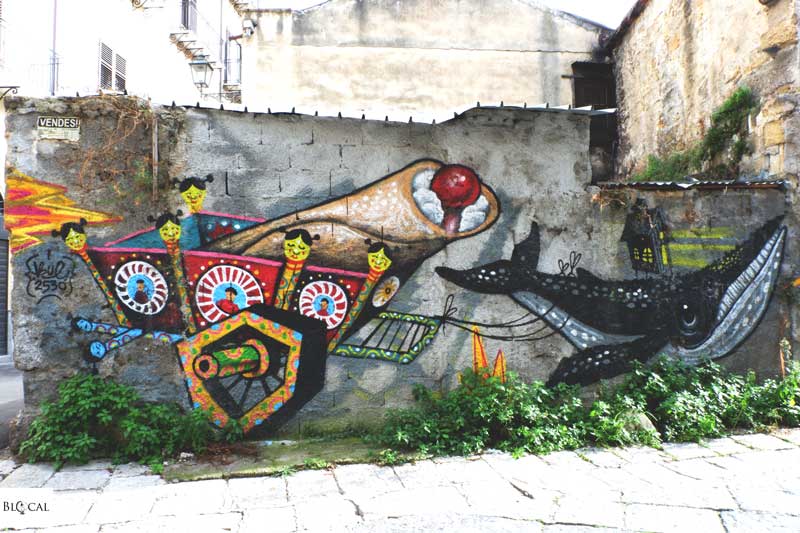
And I’m especially fascinated by the works of those street artists that travel the world as rockstars, but here in Palermo, they downsize their usual monumental scale to create something that better resonates with the artistic soul of the city.
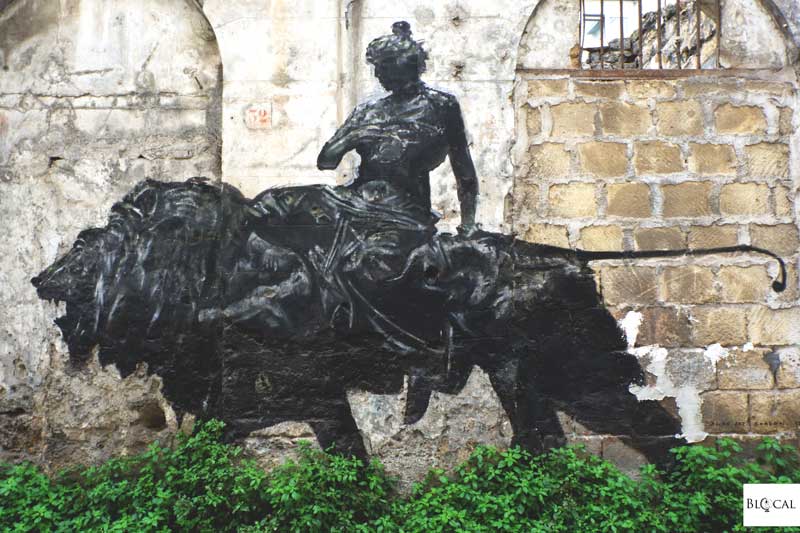
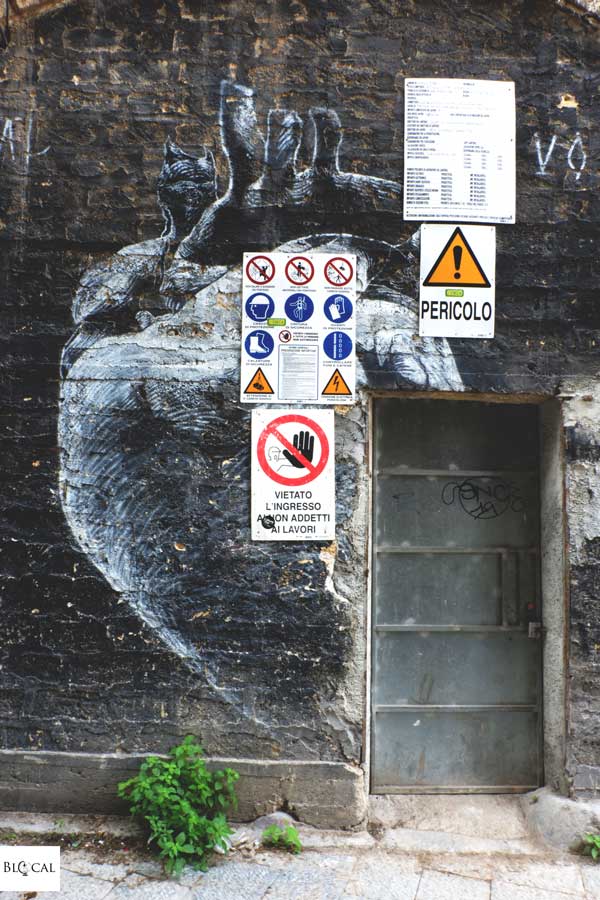
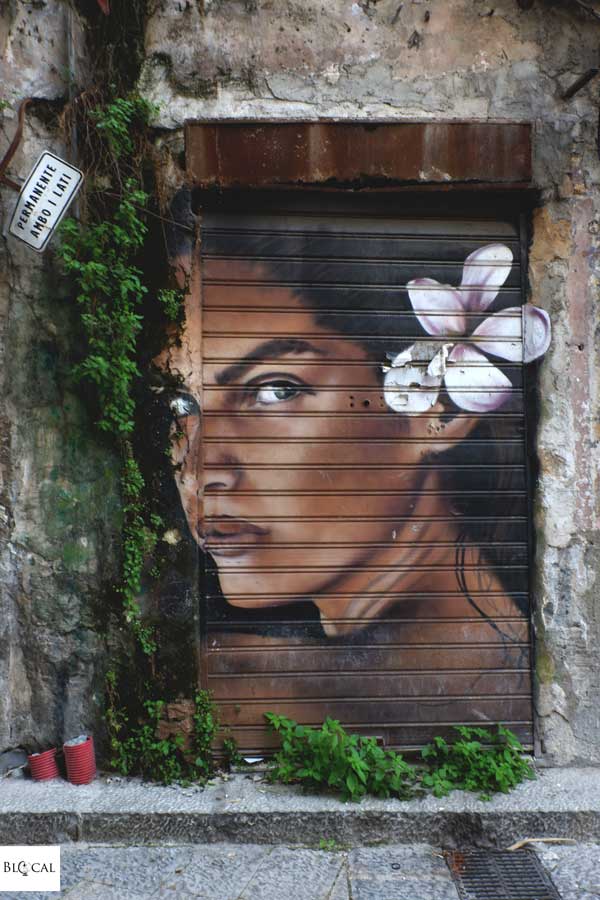
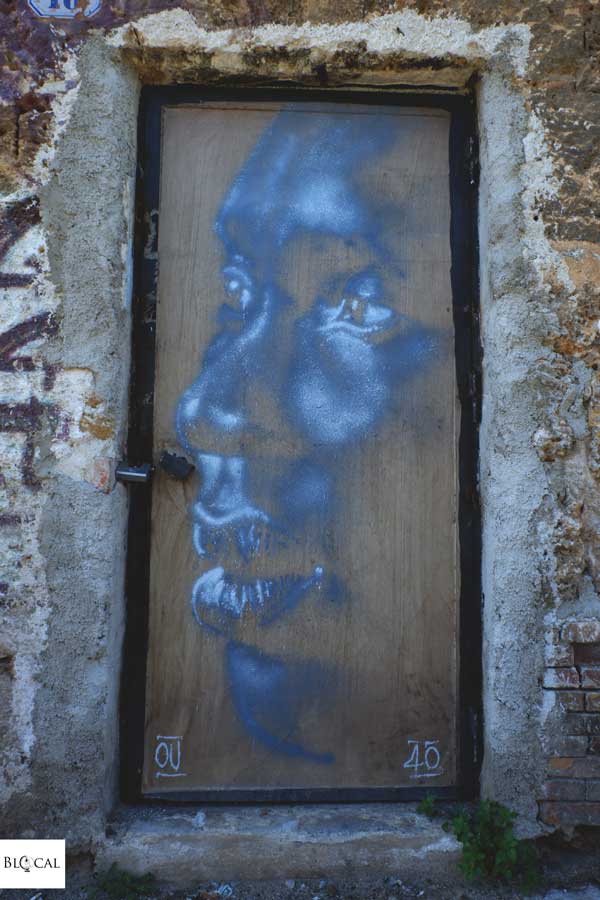
As a result, everywhere you go in Palermo you’ll find “genuine” street art. Artworks are direct, in their simplicity, like a plateau of raw fish just caught from the Mediterranean Sea. I wouldn’t bother to squeeze a lemon on top of it, ‘cause it’s perfect just the way it is.

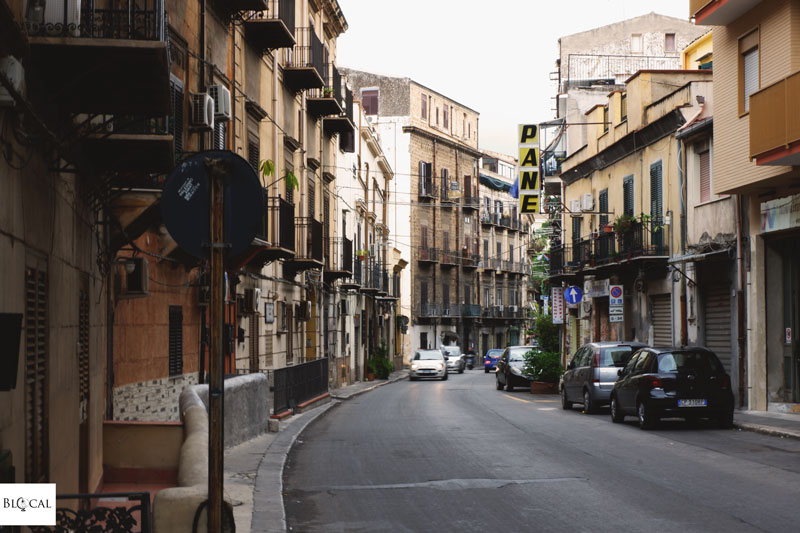
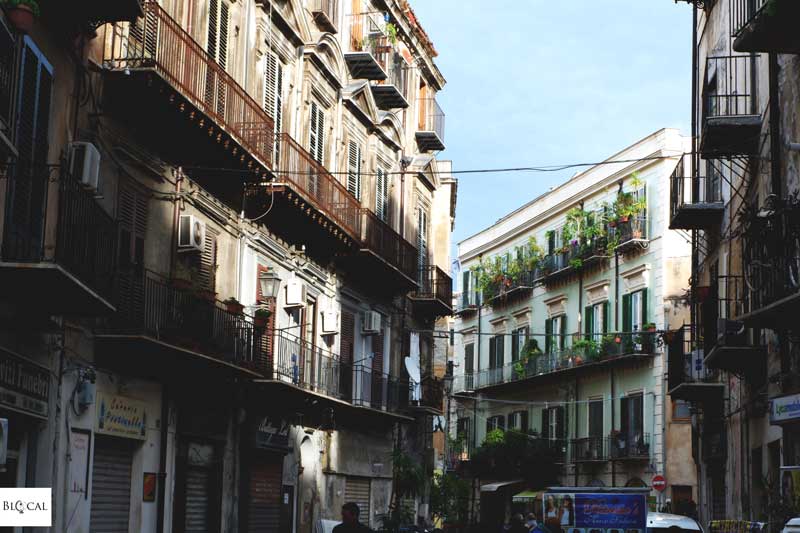
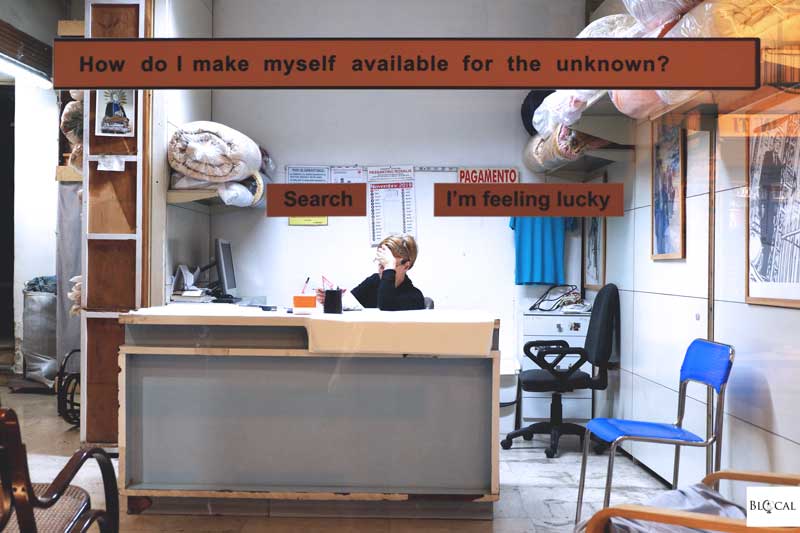
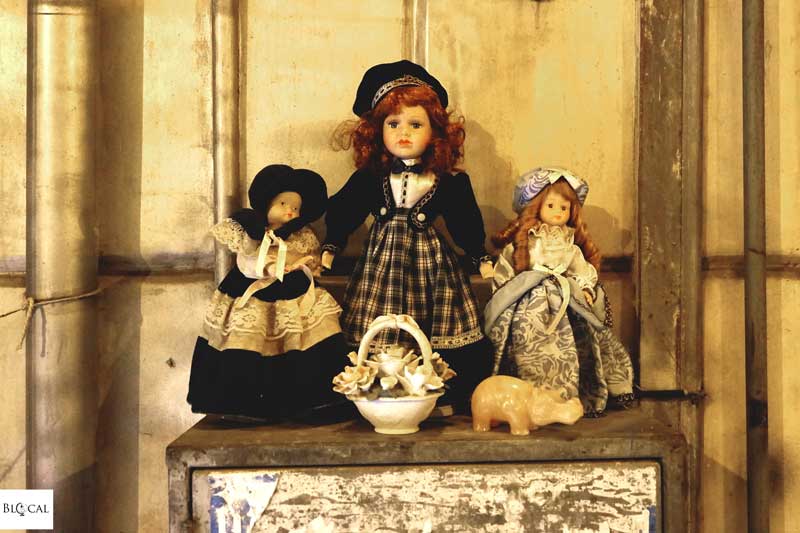
Trust me, it’s way easier if you use my Palermo Google Map!
Street Art in Palermo > Ballarò
In the bustling streets of Palermo’s historical food market, street art grew spontaneously at first, and then the work was commissioned by different local organizations dealing with multiculturalism and integration.
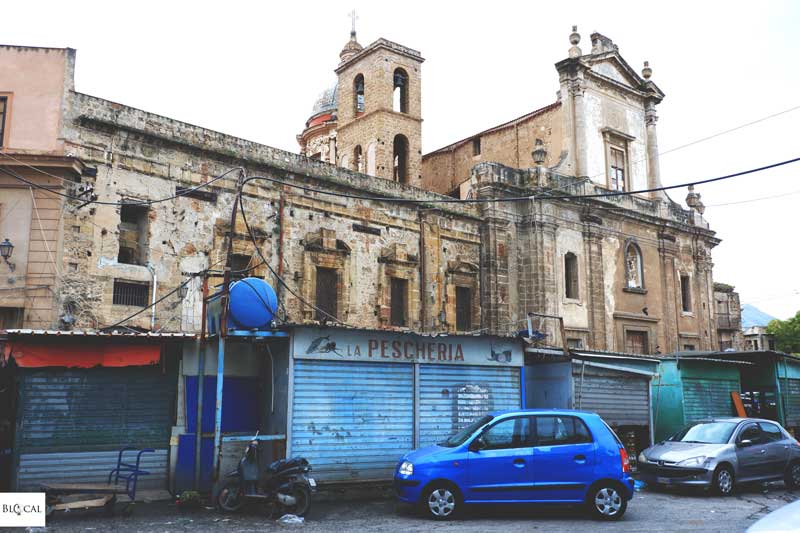
One of the hotspots, Piazza Mediterraneo, is an area that has been literally created by a group of residents that, back in 2012, decided to clean this “hole” in a building heavily bombed during WW2. The newly born square boasts of some great street art, such as “Contrappunti Antirazzista”, a piece by Collettivo FX. Commissioned during an anti-racism demonstration in 2014, it depicts portraits of people who acted either against racism (on the top) or for it (on the bottom). Those names came out during a series of conversations with passers-by.
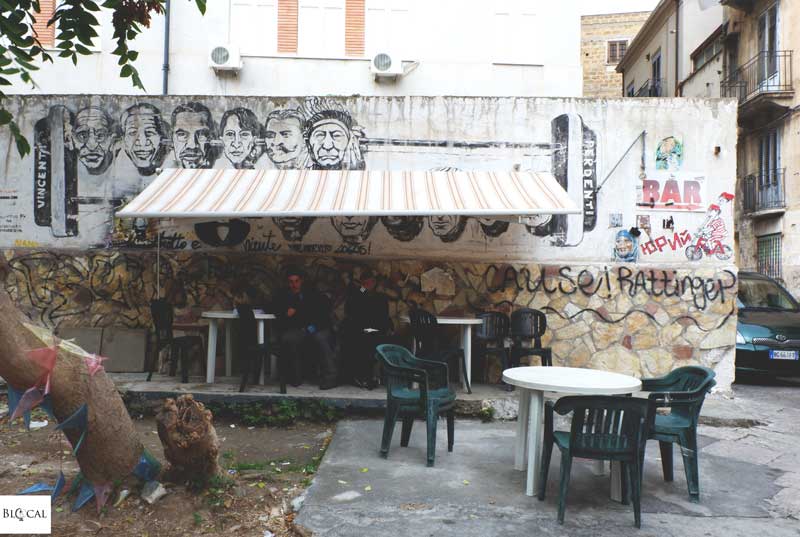
On the same square, in 2016 Luca Delfino, a.k.a. Wish, painted a mural featuring a kid with a crate of animated fruit and a case of beer.
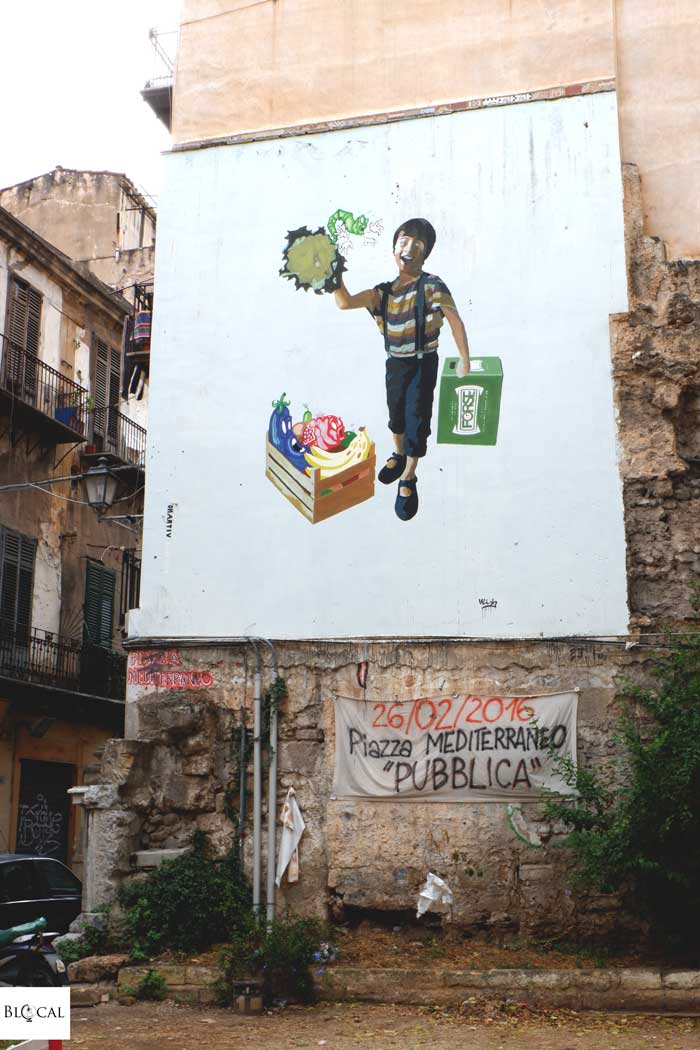
And in that same year, another formerly abandoned corner of Ballarò, Vicolo Ecce Homo, was cleaned up by residents and reimagined by street artists like Gio Pistone, Sbrama and Tuttoeniente.
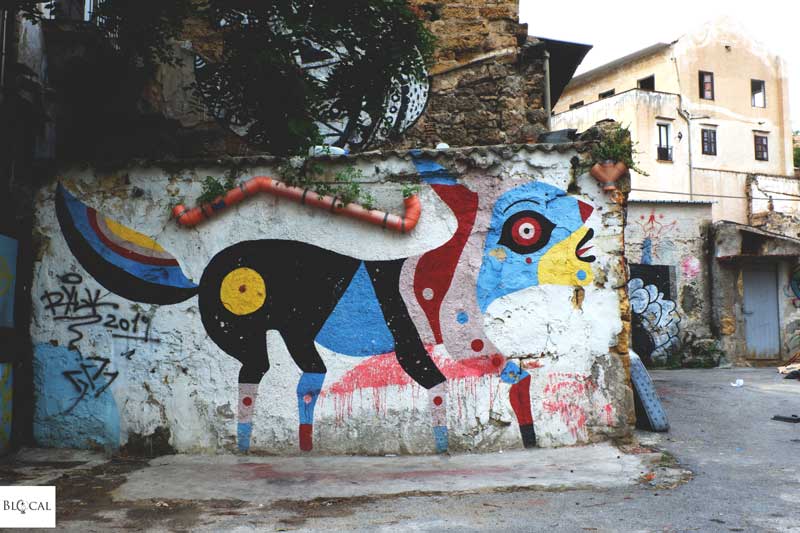
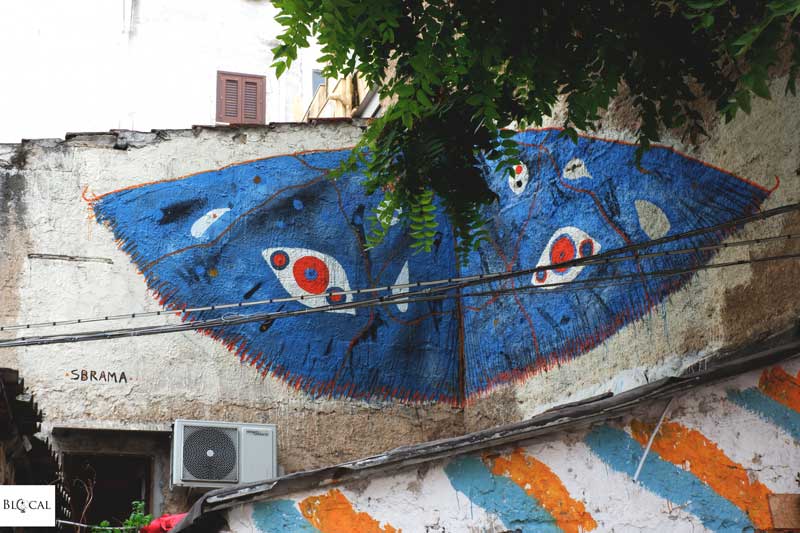
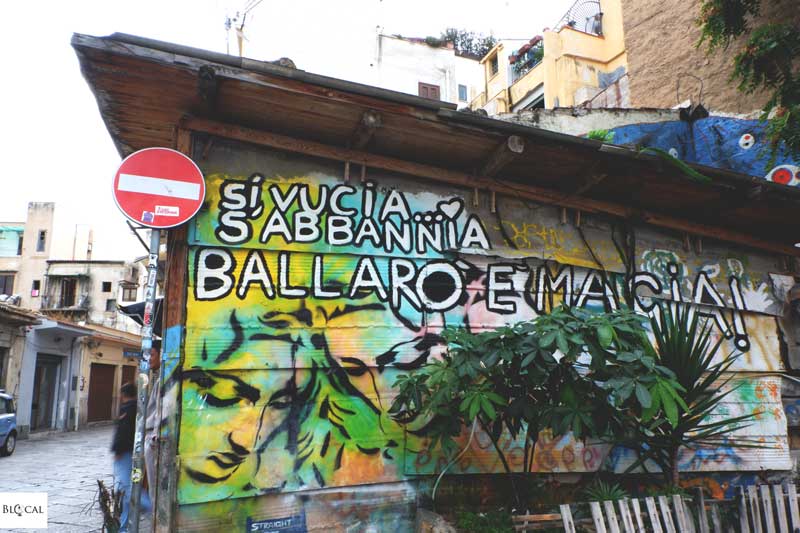
In the same newly created square, there is now a piece by Spanish artist Julieta XLF.
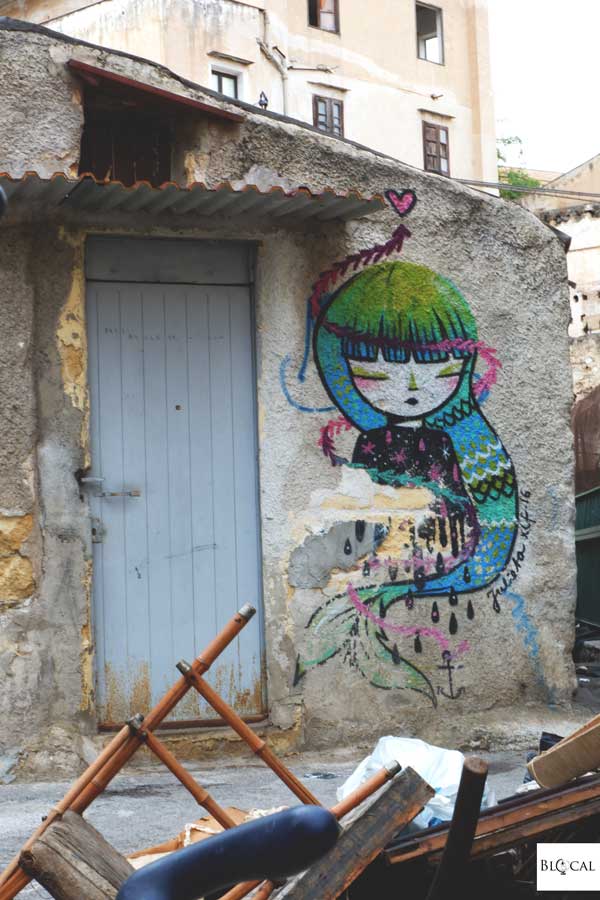
Looking back toward the market, I could spot a massive mural by Ema Jons (2014): it depicts two faces that represent the multicultural soul of the neighborhood.
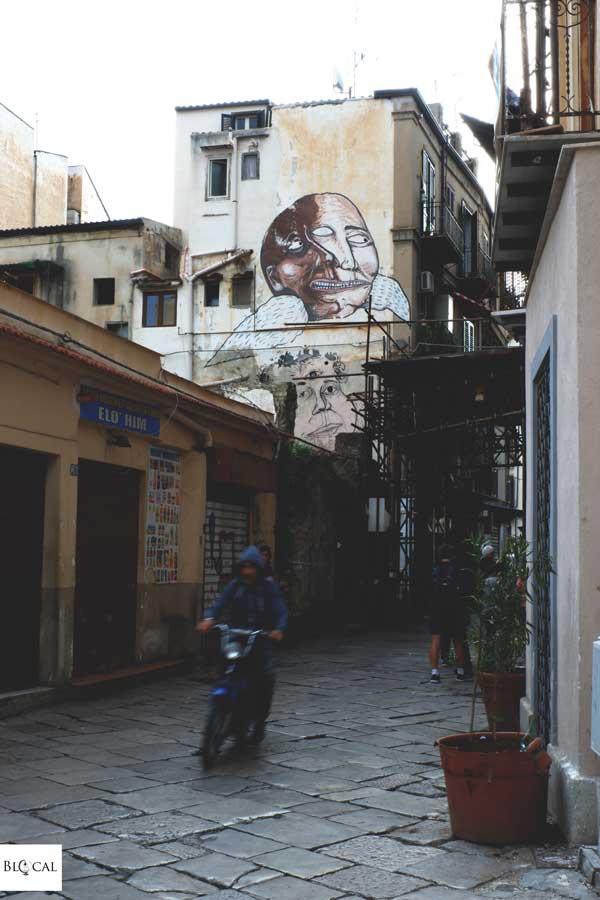
Wandering around the stalls of Ballarò market, I stumbled upon a recent piece by Ema Jons (2019), a couple of Sqon’s iconic cats and the peeling wall of a pedestrian alley covered with graffiti.
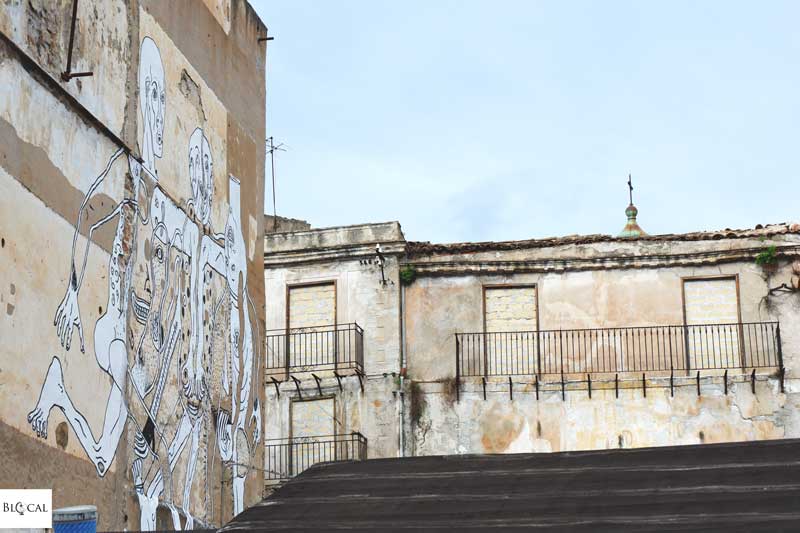
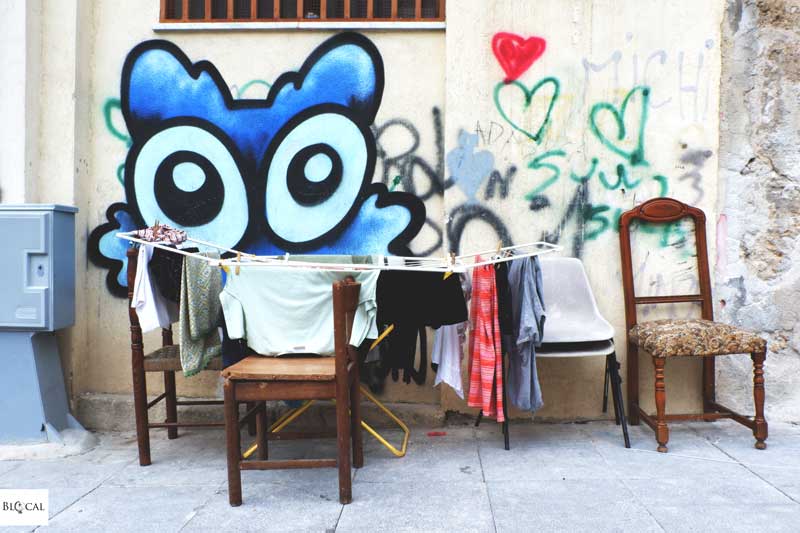
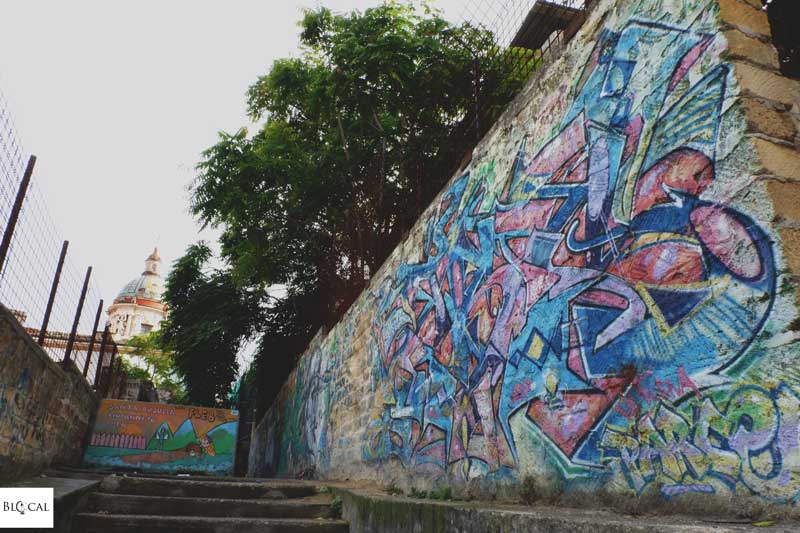
Eating out in Ballarò
- Trattoria Il Bersagliere – indulgent restaurant serving traditional cuisine
- Ballarak brewery – microbrewery where you can also eat
Read also – Street artists painting on derelict villas seized from the Mafia at Pizzo Sella Art Village in Palermo
Street Art in Palermo > Kalsa
I entered Kalsa from Via Schioppettieri, where I saw a beautiful work by Andrea Casciu next to posters, bubble letters, and more creative spurts on walls and shutters.
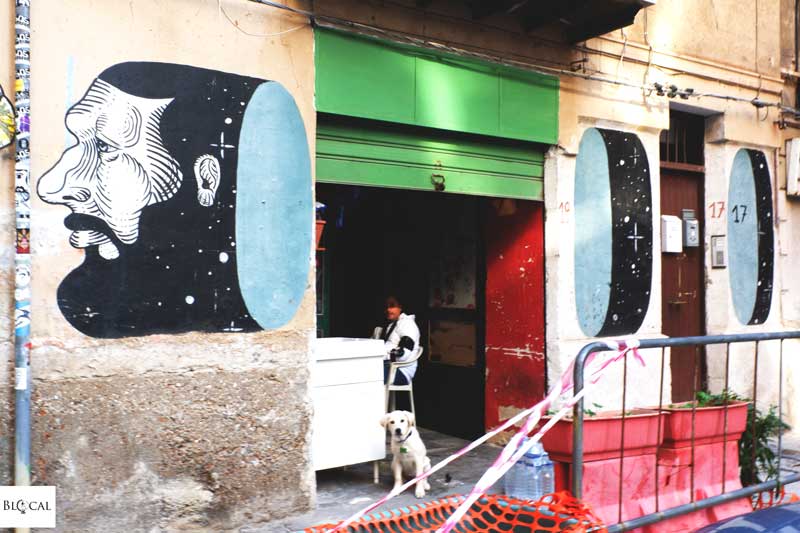
I kept walking toward the heart of the neighborhood and, just behind the Modern Art Gallery, I found a very old piece by the Neapolitan duo Cyop & Kaf right next to a tag by the Sicilian duo Rosk & Loste.
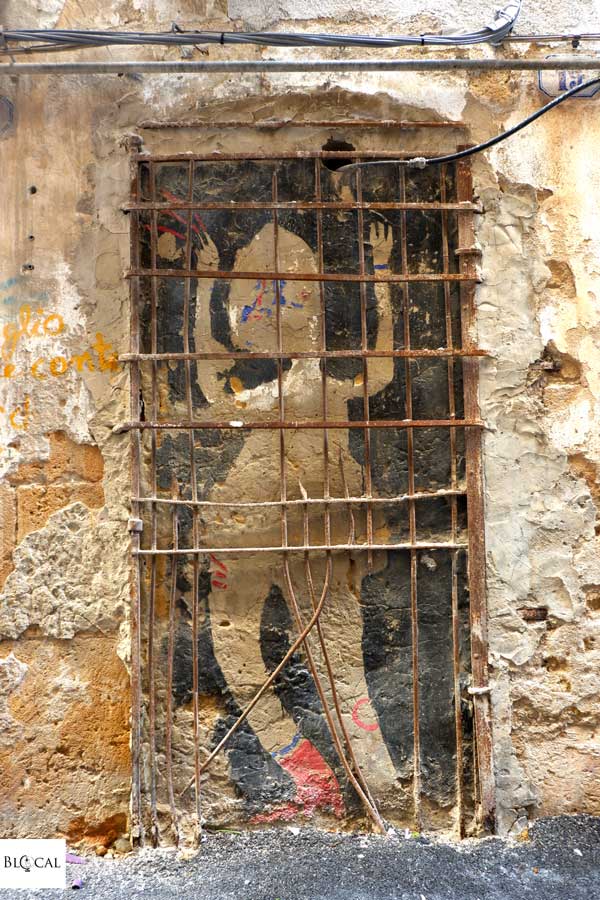
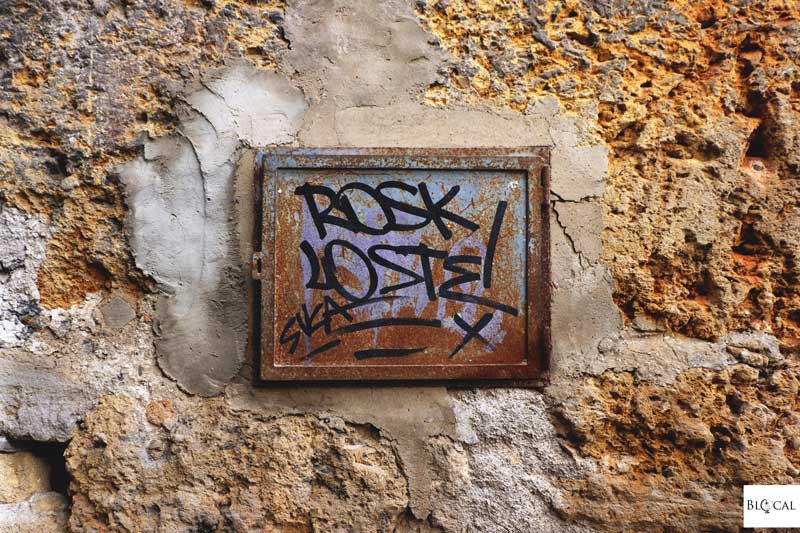
I was heading to Piazza Magione, where Palermo’s first urban art project took place in 2009 (Wallpaper 09). Surprisingly enough, some of the pieces painted on that occasion are still visible, albeit a tad faded. Even before reaching the square, I stumbled upon a long, monochromatic piece by Ema Jons. Painted in 2014, it brings up political and social issues that are still relevant today.
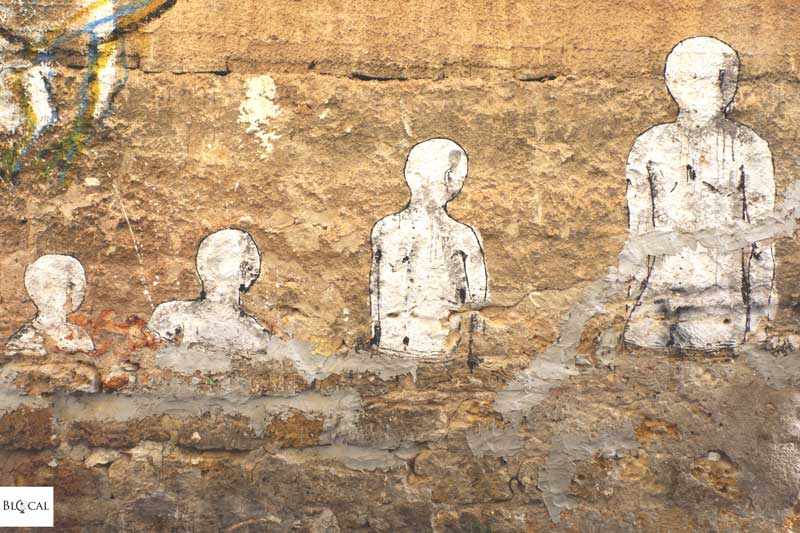
Once in the square, I marveled at an old stencil piece by Sten and Lex. “Papa Sergio I” was inspired by the Flemish painting “Sogno di Papa Sergio” by Rogier van der Weyden, which depicts the Pope who was born in Palermo.
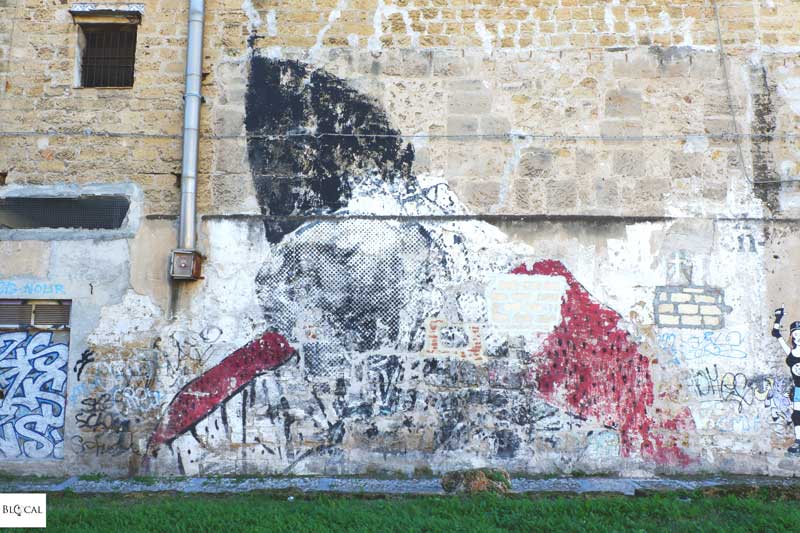
On the other walls of this former convent I spotted old pieces by Lucamaleonte, Pao, and Zolta.
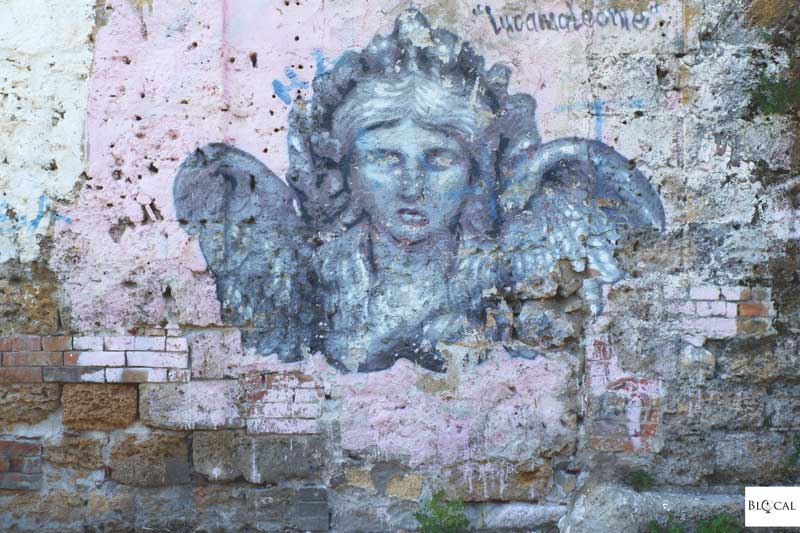
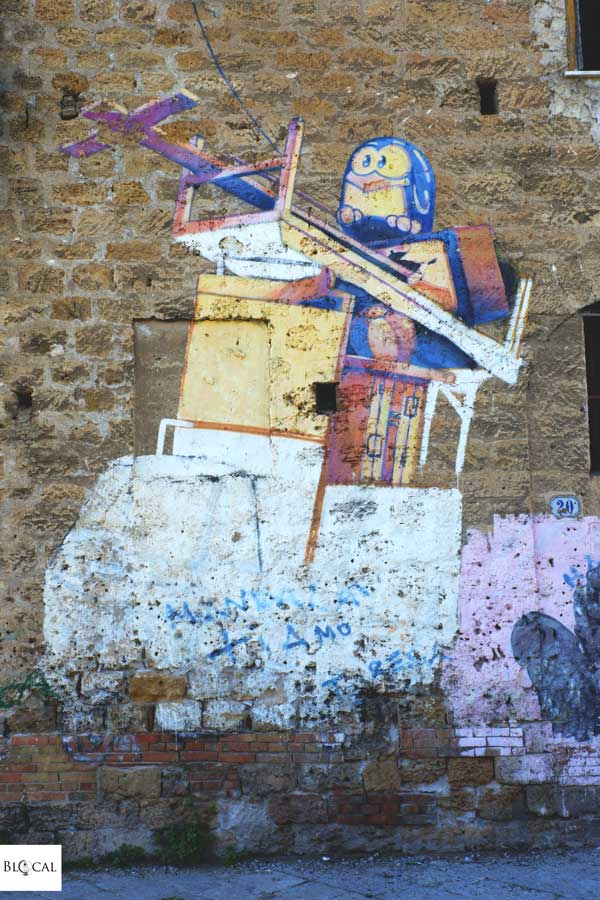
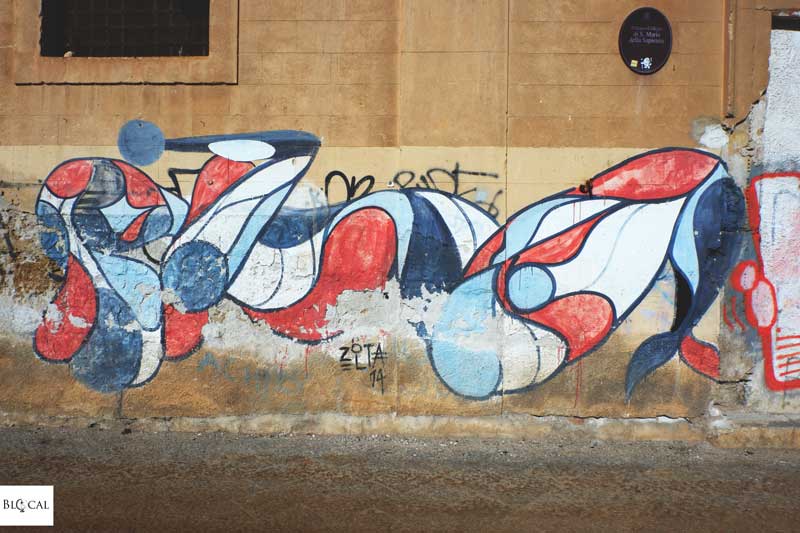
The Kalsa neighborhood is a mix of wealthy people living in the recently renovated buildings and old residents. This contrast is mirrored in Kalsa’s collection of street art, which features the only three large-scale, “polished” murals I’ve seen in Palermo. Painted in 2018 respectively by Basik, Rosk & Loste, and Camilla Falsini, they are key elements of the “urban regeneration” that has affected the neighborhood.
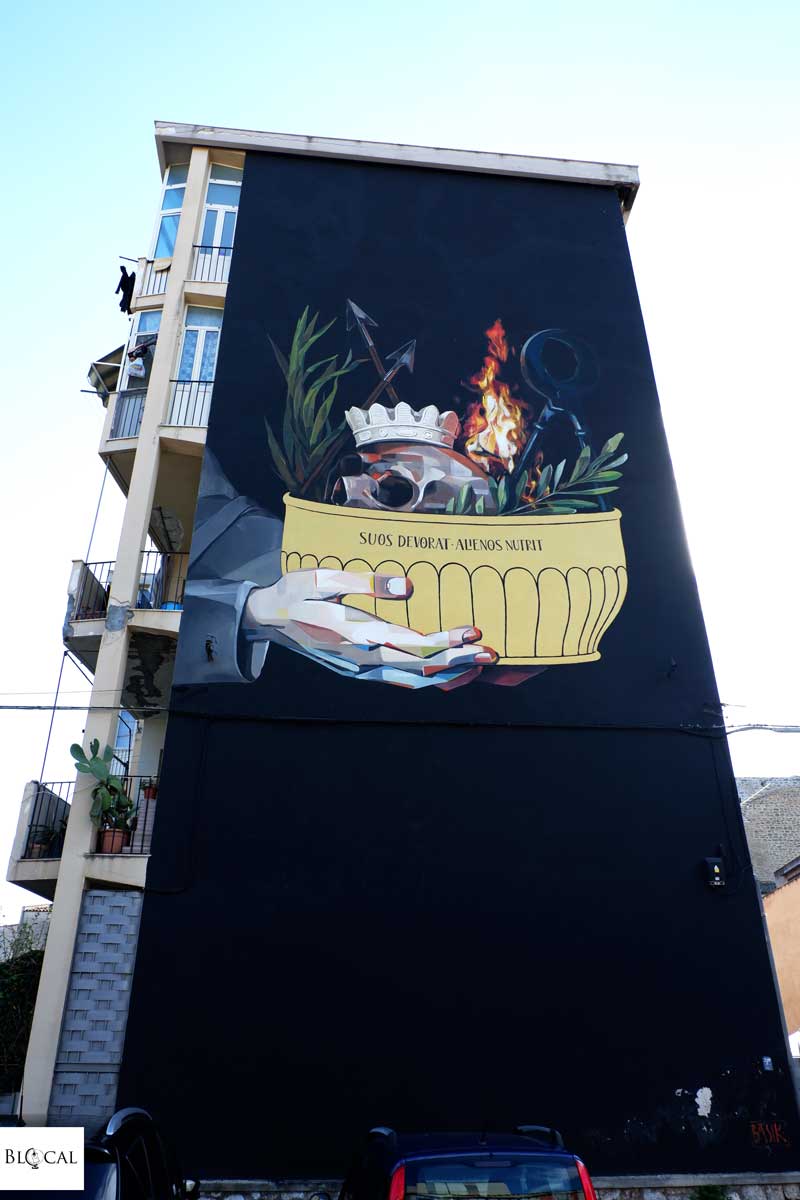
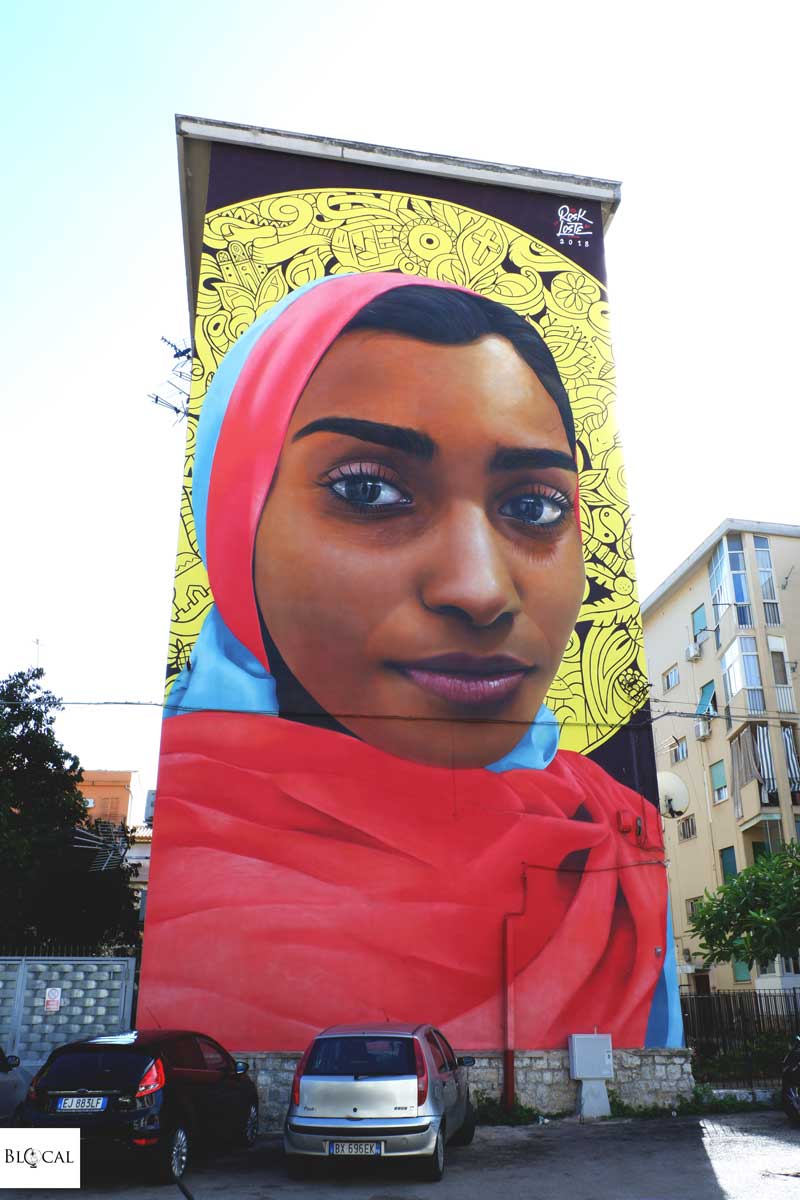
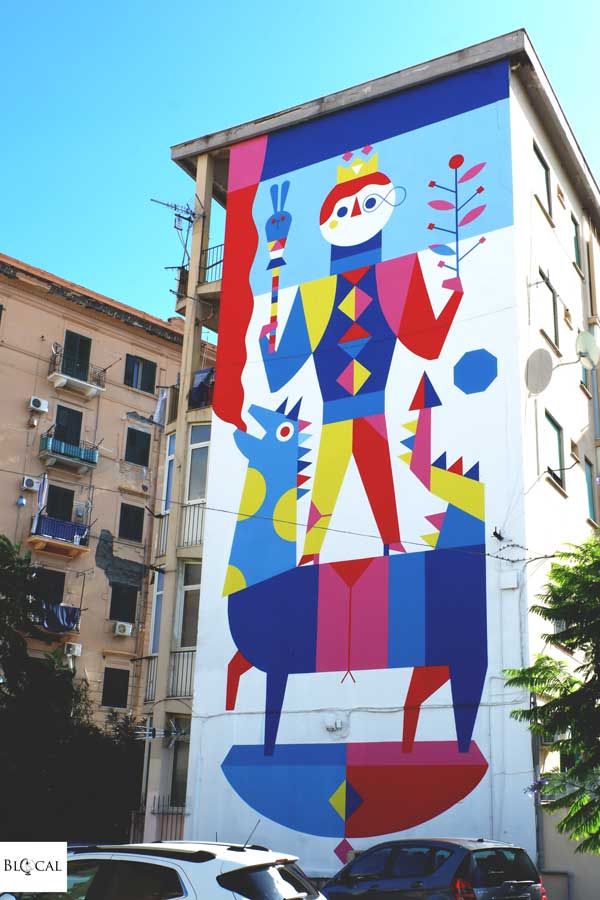
However, just in front of them is a huge piece by Ema Jons from 2015 that’s currently peeling off a concrete wall. Abandoned to time, this building and its street art still resists alongside the more authentic soul of Kalsa neighborhood, which you can still find in the street food stalls and the artisanal shops all around Piazza Kalsa.
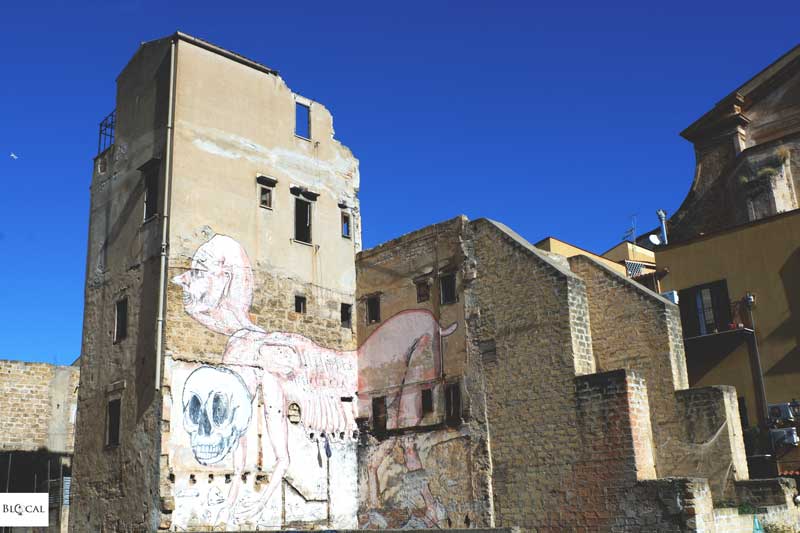
Eating out in Kalsa
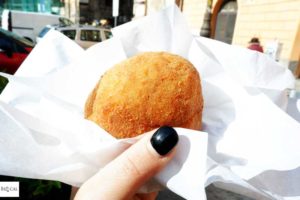
- Bar Touring – best Arancina in town;
- Cloister of Santa Caterina d’Alessandria – hidden inside the cloister of this Church, there is an ancient pastry shop that seclusion nuns conducted for centuries. The best pitstop of the whole trip!
Street Art in Palermo > Capo
My favorite market in Palermo is Mercato del Capo, perhaps because its stalls sell less souvenirs and more genuine food. It’s the perfect place to try traditional Sicilian recipes and indulge in the freshest fish.
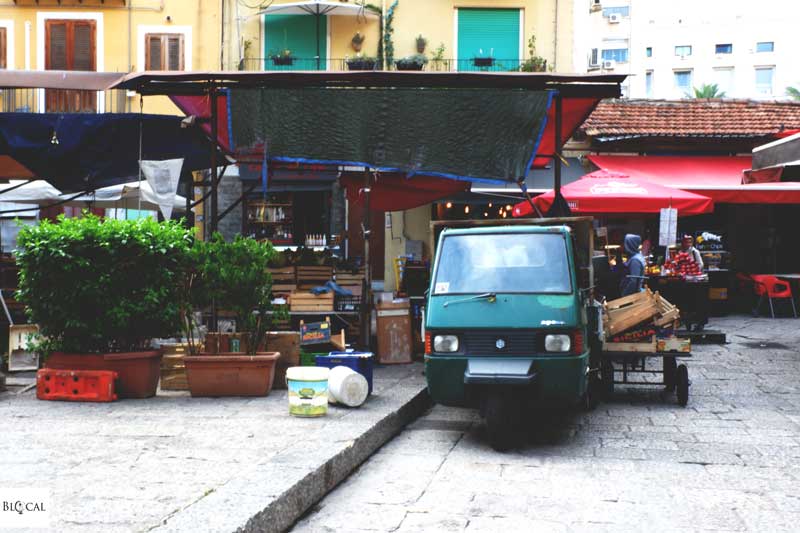
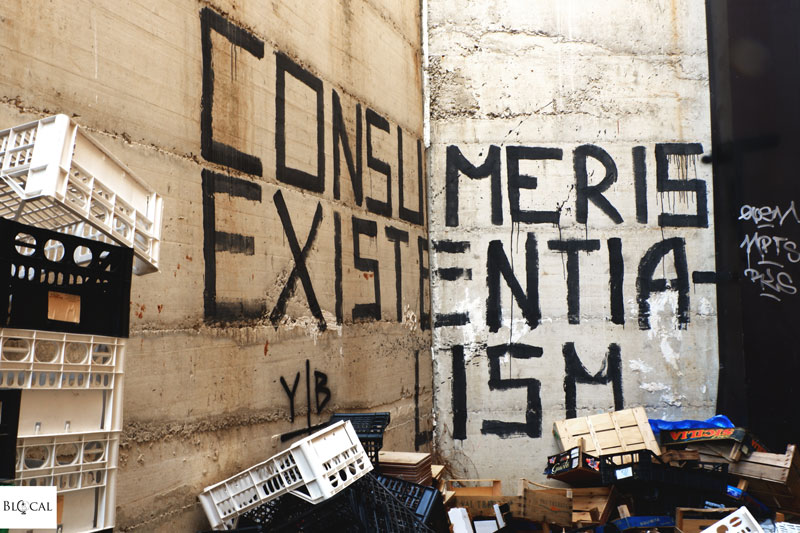
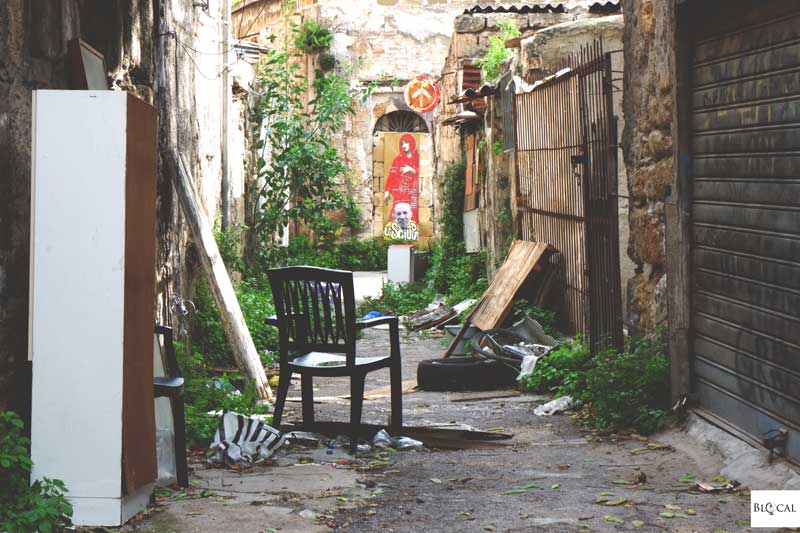
Many artworks in the area of Mercato del Capo were created in 2016, during the jam “Inseminazione artistica”, which involved more than 50 artists from all over Italy. Rather than going through the approval of sketches, artwork arose spontaneously, inspired by discussions with residents and local organizations. Most of them are on a long wall surrounding Piazza Sant’Anna al Capo. Here I spotted Zolta’s iconic characters, a rare vibrant piece by Ema Jons, which stresses the housing problem in the city center of Palermo, a piece by BDN recalling the popular tale of “the Emperor’s new clothes”, the monochromatic characters by the English artist Pang, Atoche’s classical faces, and a colorful artwork by Brazilian illustrator Auma, among many others.
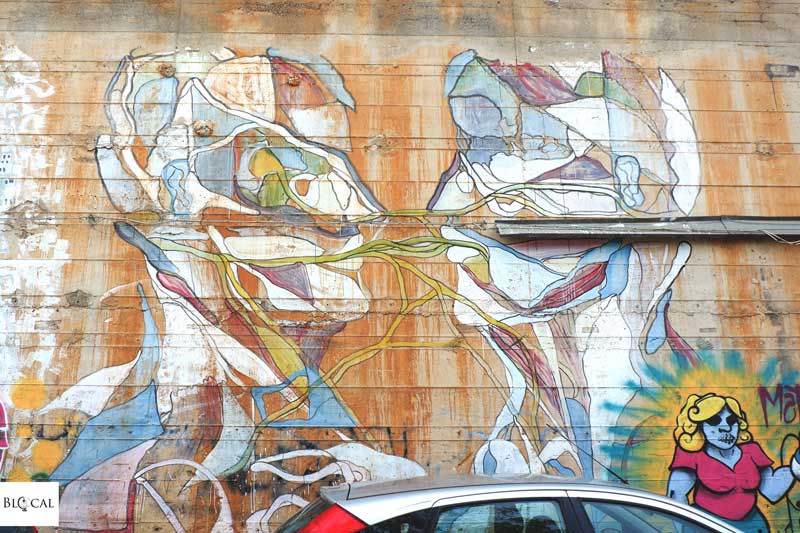
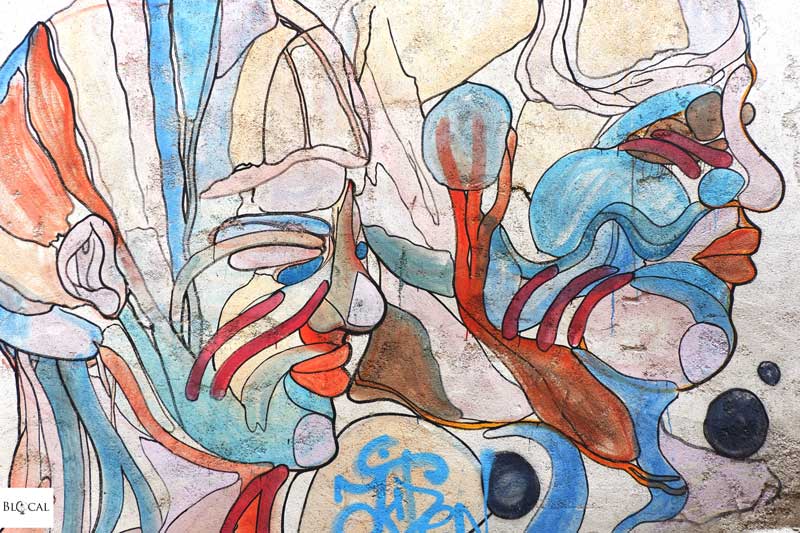
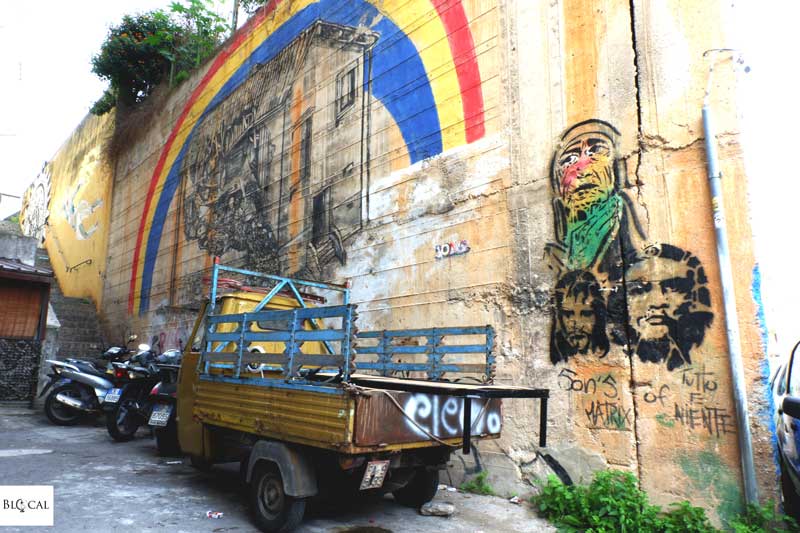
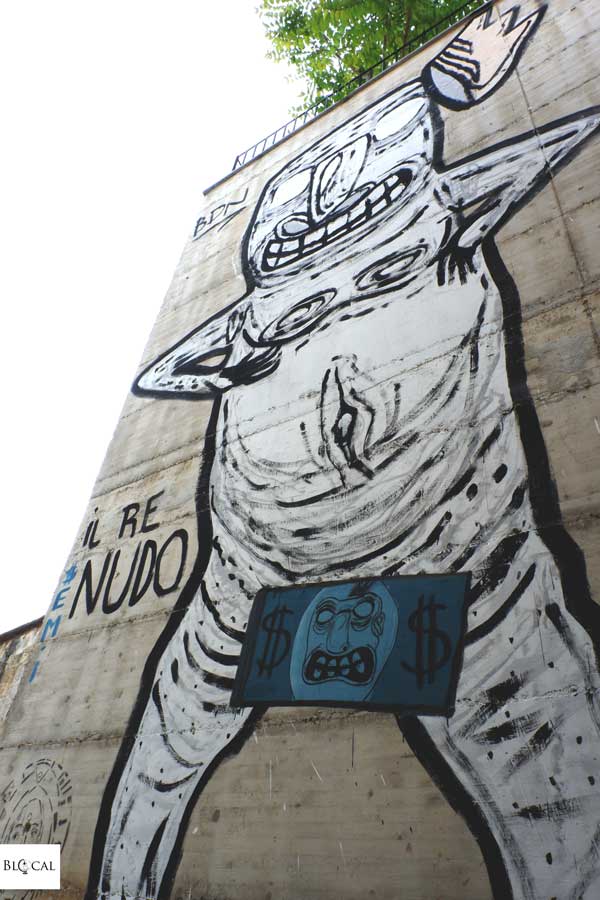
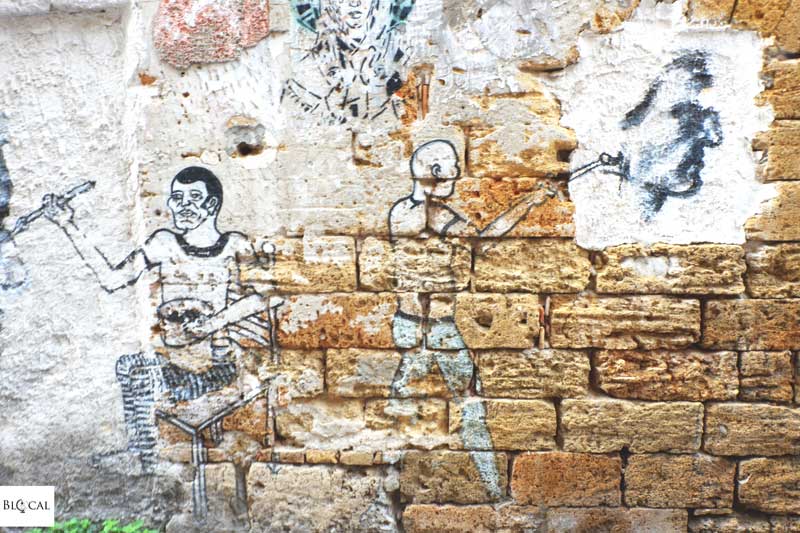
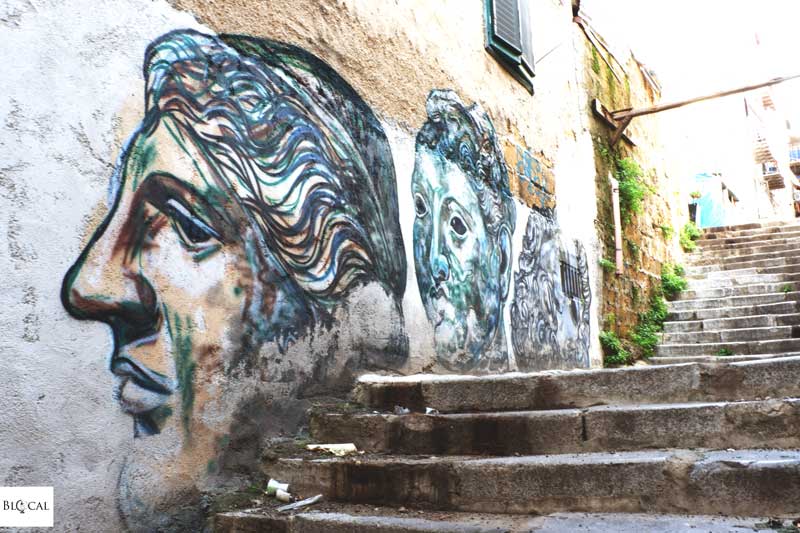
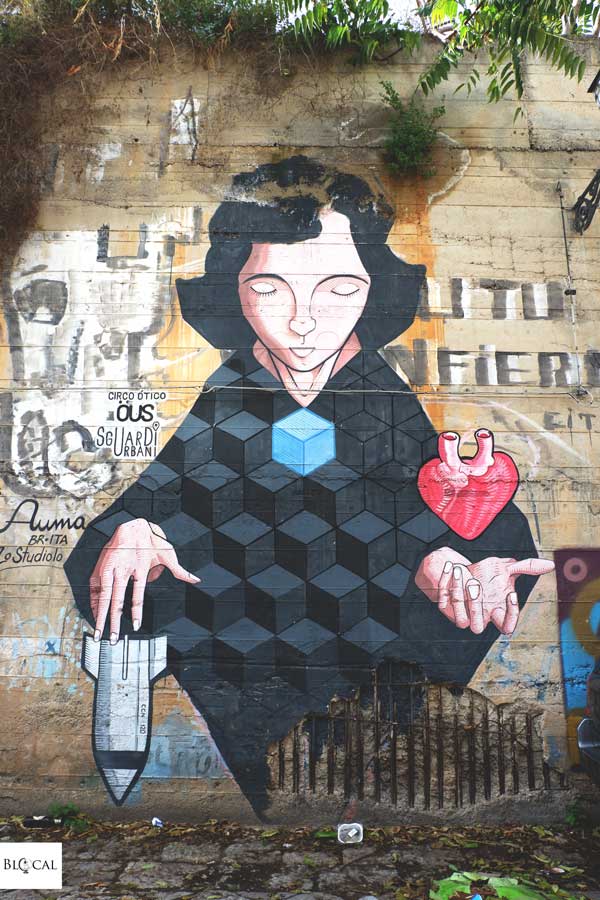
More artwork can be found in the streets of the market: a portrait by Leonardo Borri, and several stencils of sacred images and iconic characters by local artist Tuttoeniente.
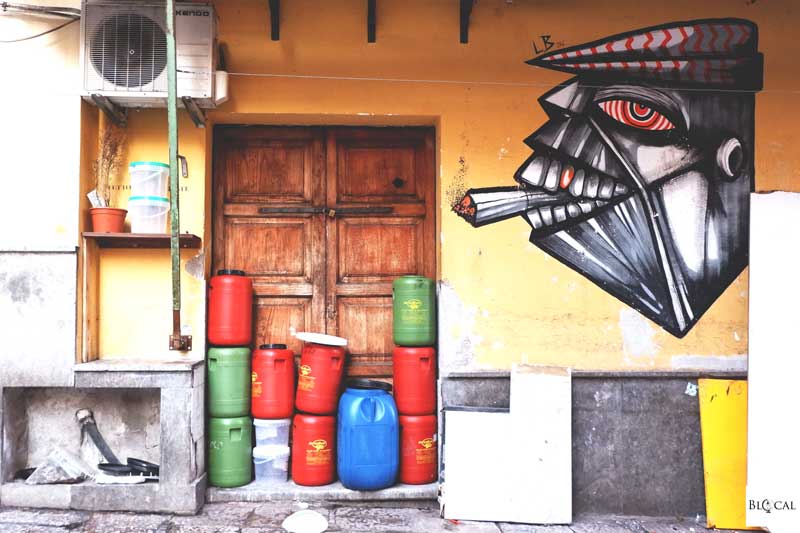
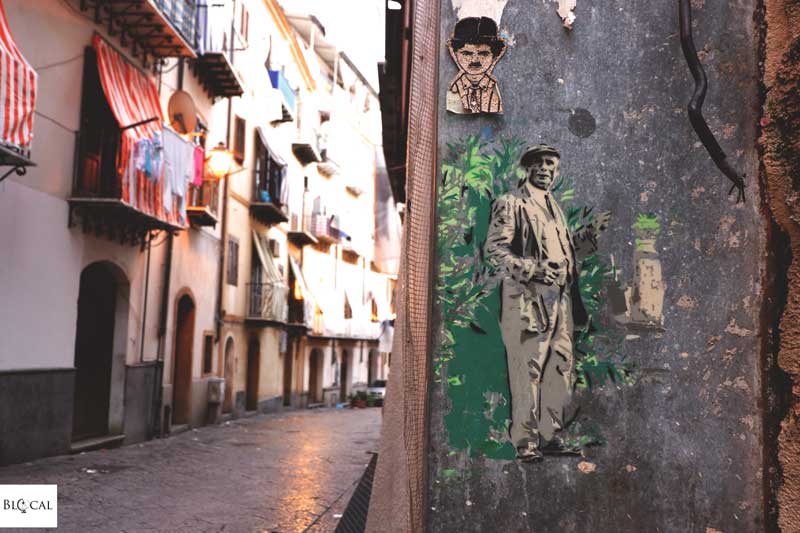
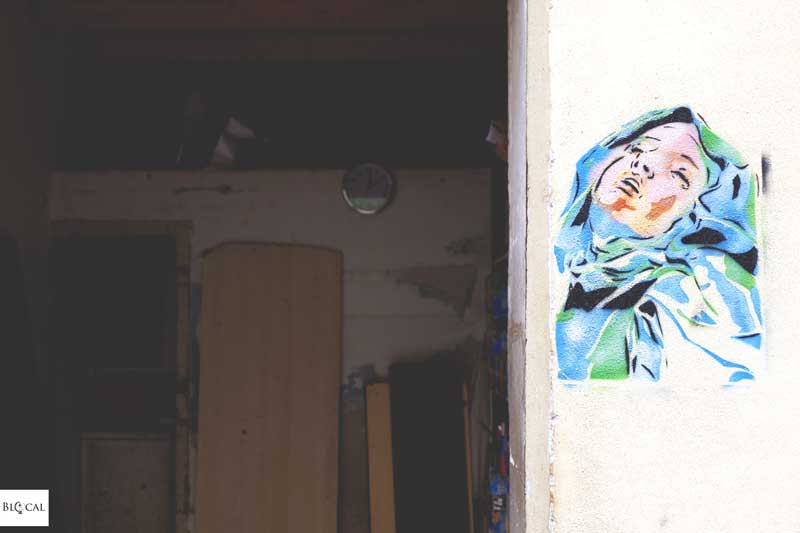
Eating out in Capo
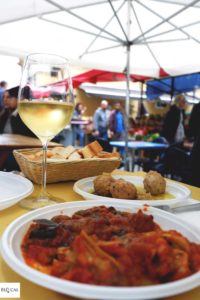
- Enoteca del Capo (Via Porta Carini 56) – my favorite meal in Palermo (it probably has something to do with their Sicilian Traminer wine)
- Dainotti l’Apericapo – the best place for aperitivo
- Supra I Mura – amazing fish restaurant
Street Art in Palermo > Vucciria
Another historic food market in Palermo is Vucciria, although many food stalls have shut down over the years and today’s market is way smaller than what it once was.
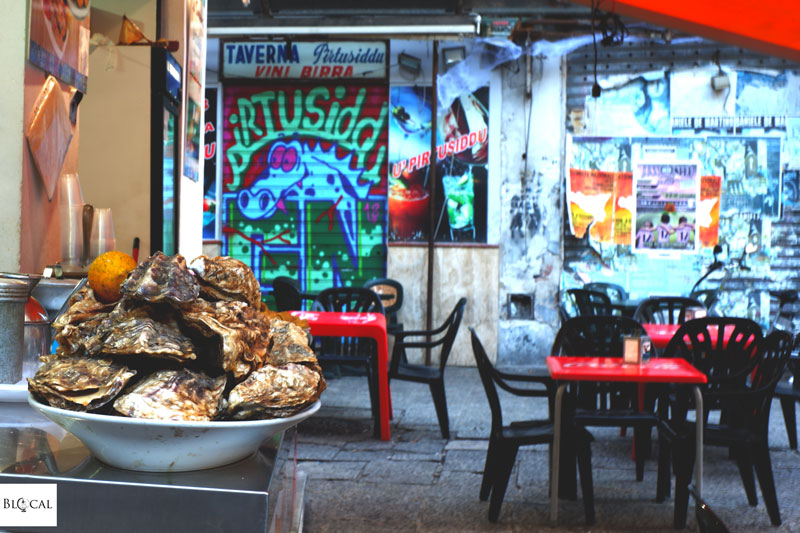
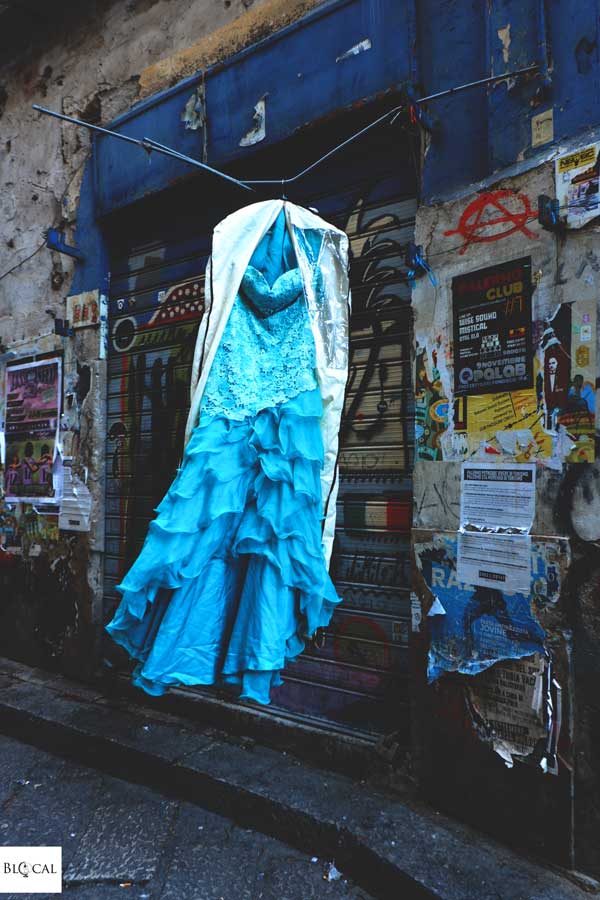
However, the area has become quite popular at night, either because of its bars serving cheap drinks or the amazing street food. Many buildings around Vucciria were torn down during WW2 and left to rot ever since, which definitely contributed to the underground vibe of the neighborhood.
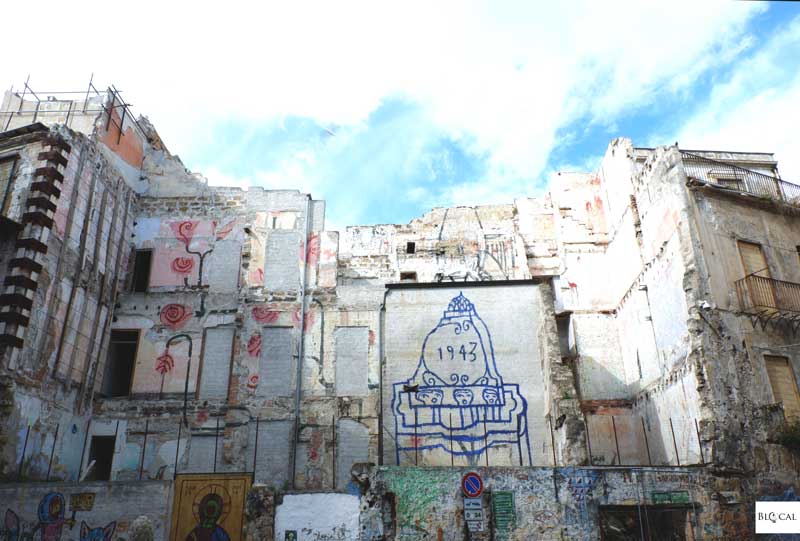
Around Vucciria I spotted many spontaneous pieces on shutters and walls by both national and international artists, such as Bibbito, Astronaut, and Exit Enter.
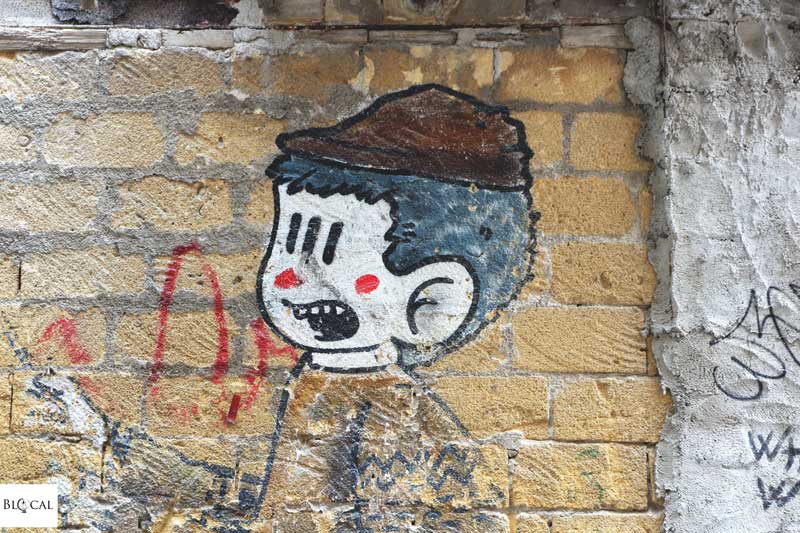
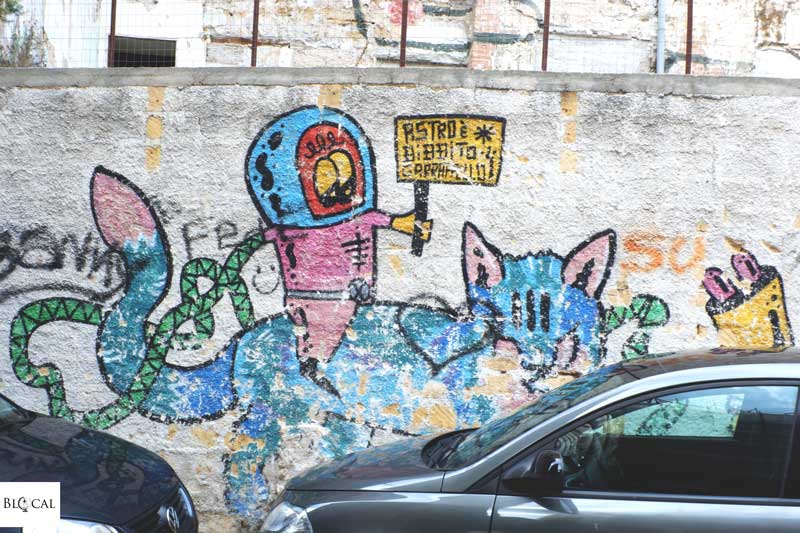
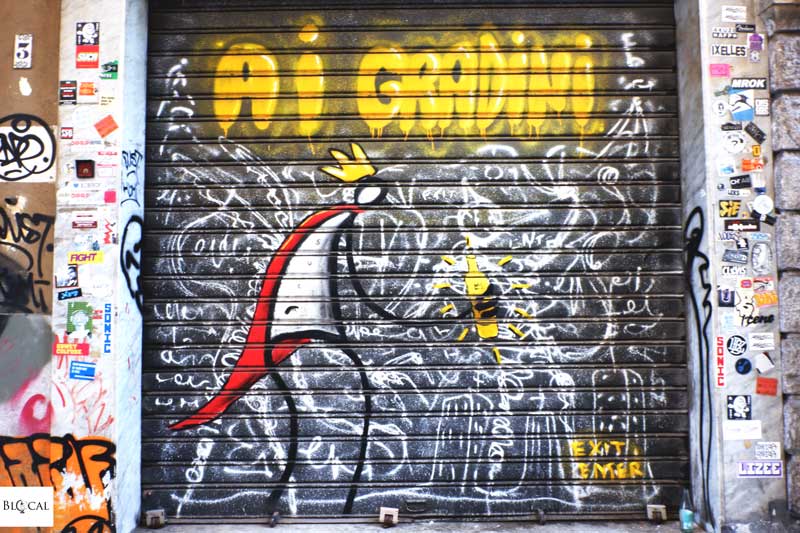
Street art is so widespread in this area that you can find it in any form, from posters to interventions by well-known street artists, such as Axel Void and Tadlock. The largest concentration of artworks is around Piazza Caracciolo; it includes pieces by C215 and Hopnn.
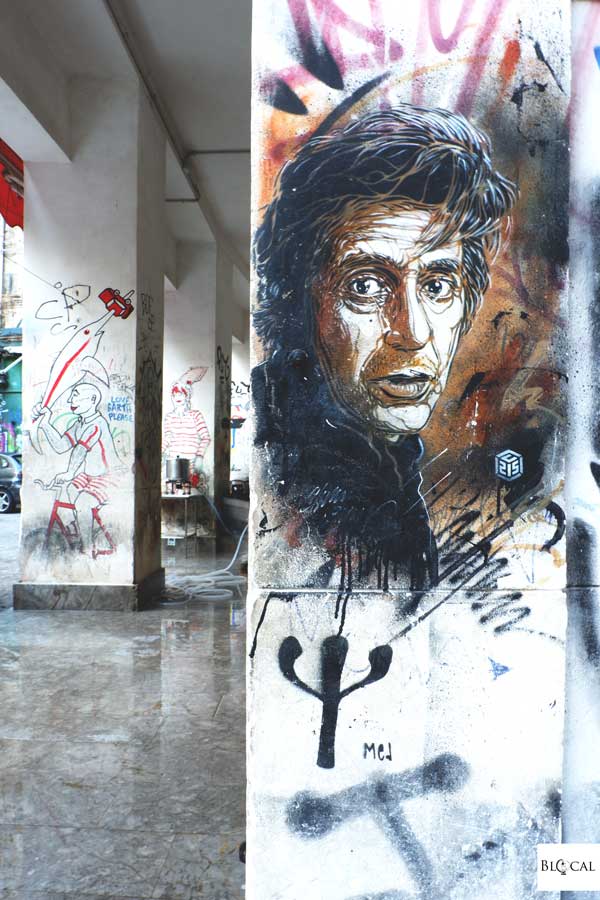
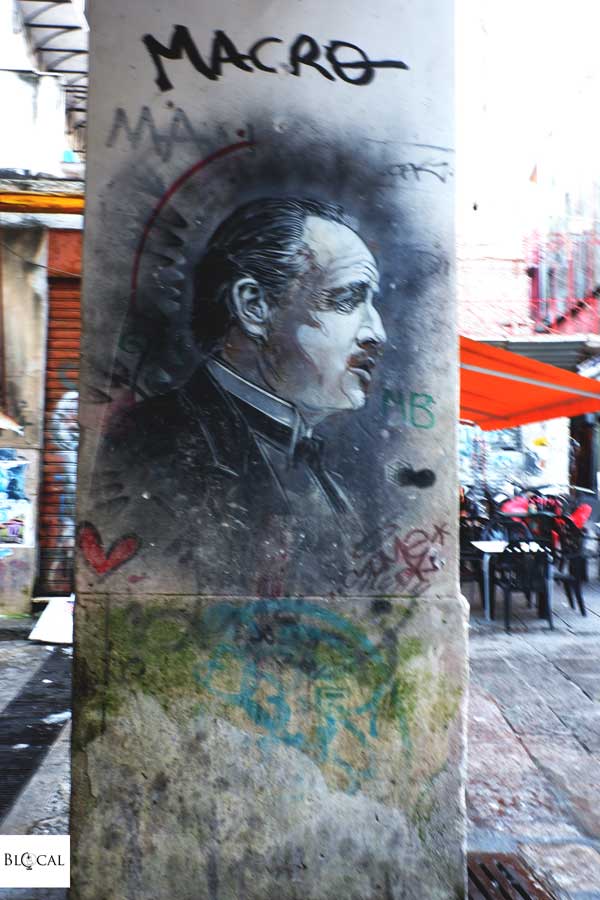
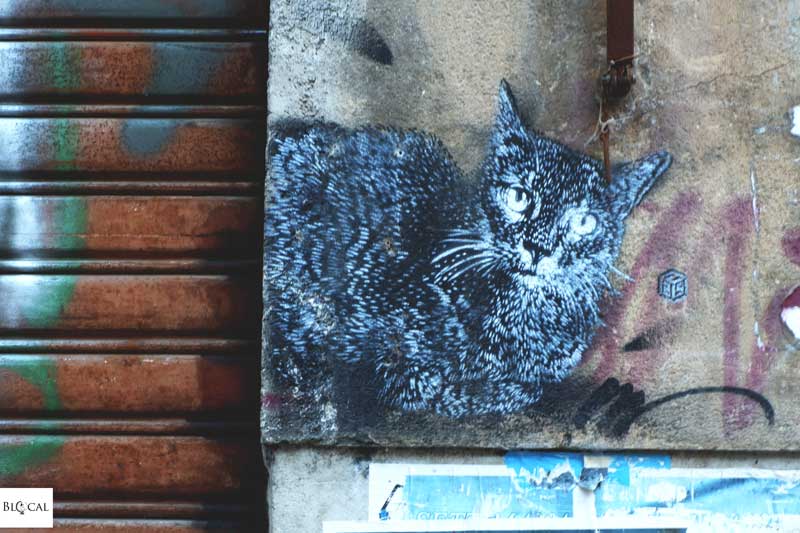
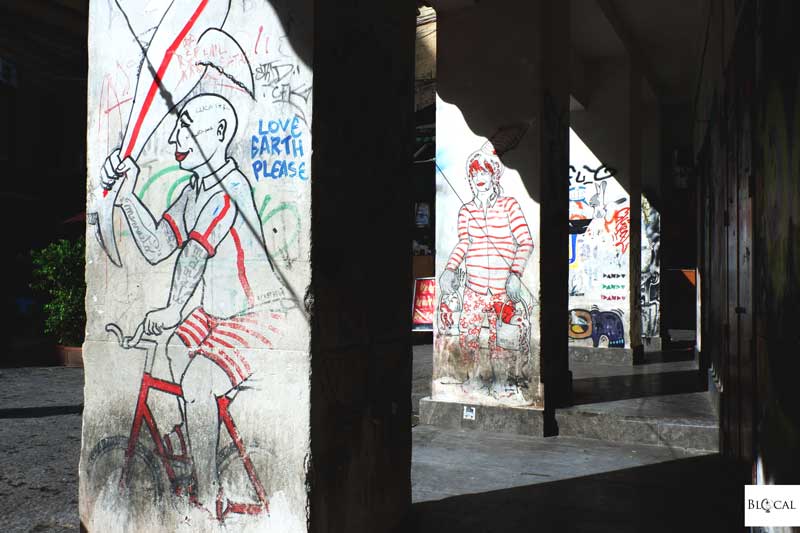
Outside the Vucciria market, while walking toward the sea, I stopped in Tarzanà Square to admire a mix of artwork by Ema Jons, Tilf, and Nessuno Nettuno, ceramic tiles by B1 and “Niegghia” (meaning “something useless” in the local dialect) posters by Mancuso.
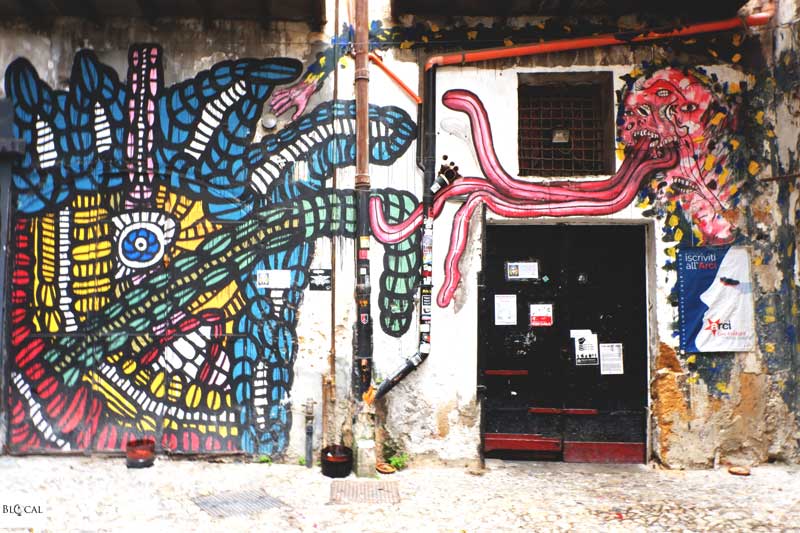
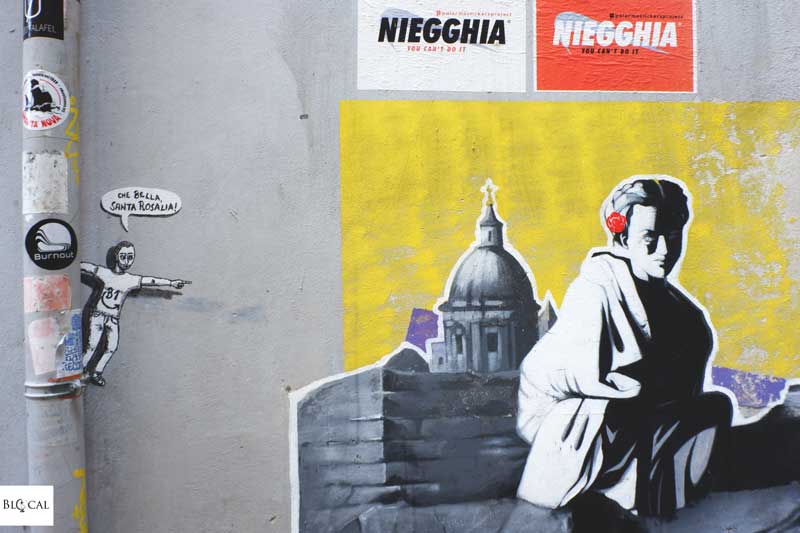
Eating out in Vucciria
- Ferro di Cavallo – Palermitan cuisine since 1944;
- Taverna Azzurra – since 1986, it’s one of the best places to drink in Palermo;
- Trattoria da Totò – traditional restaurant specializing in fish;
- Mak Mixology – best cocktails in Palermo.
Street Art in Palermo > Borgo Vecchio
Once inhabited by fishermen and workers, Borgo Vecchio still is a relatively poor area plagued by heaps of social issues.
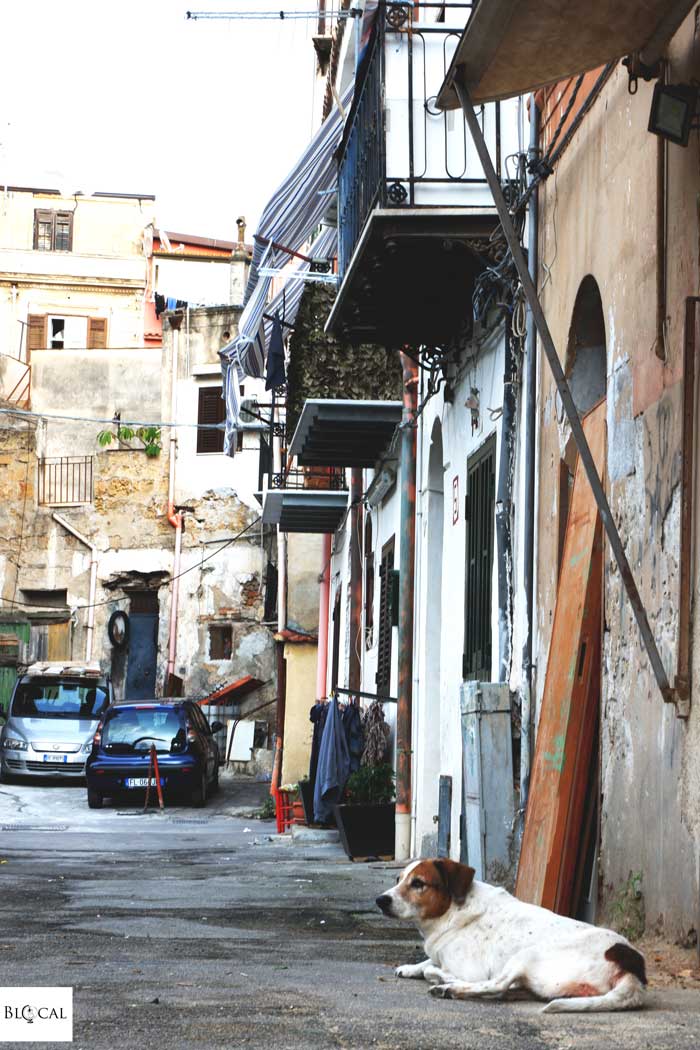
In 2014, my friends at PUSH, together with local organizations dealing with student dropouts, organized the Borgo Vecchio Factory. This crowdfunded street art project began with a series of workshops where local kids could draw together with artist Ema Jons.
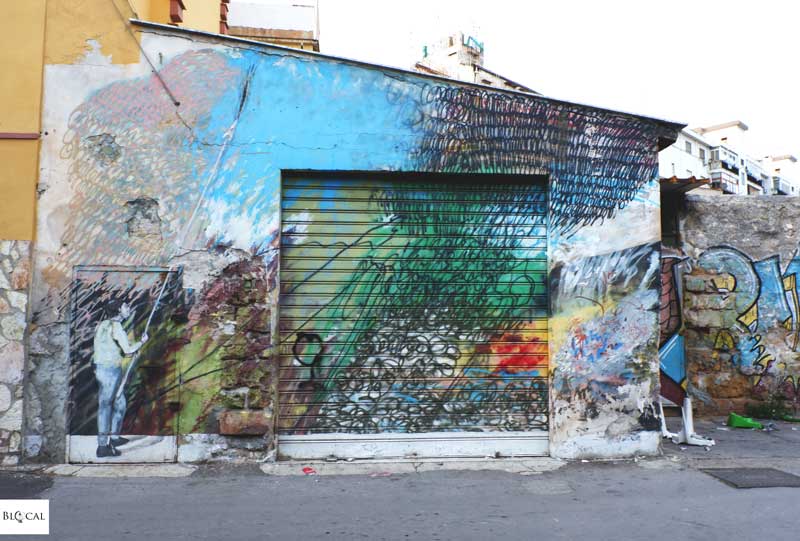
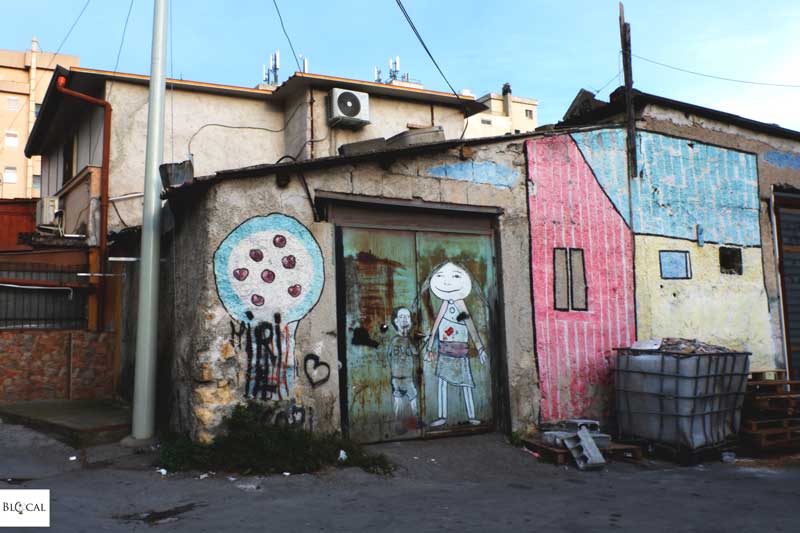
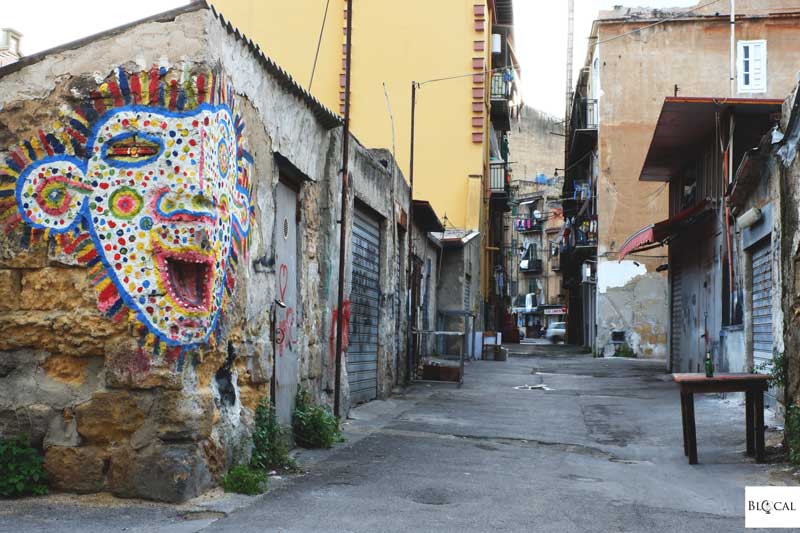
Afterwards, these drawings were reproduced on the walls throughout the neighborhood. More artists joined the project, such as Alleg, Aris, and the English Pang, who did a series of workshops about Homer’s Odyssey.
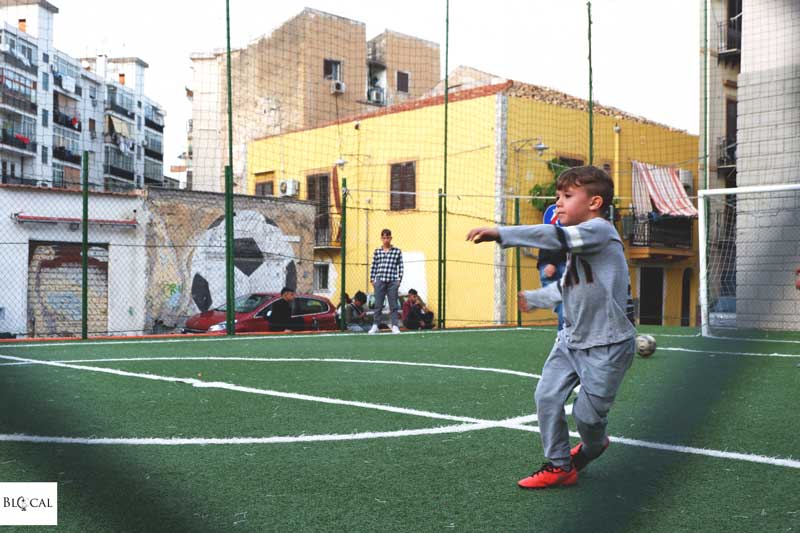
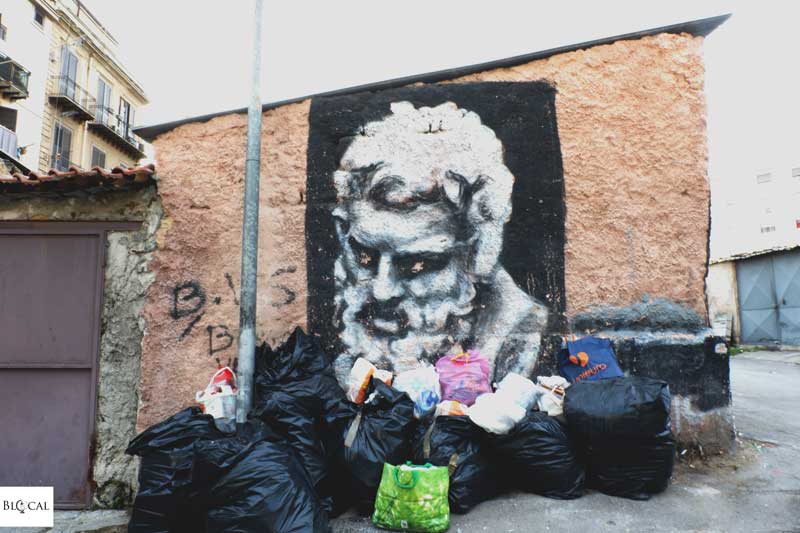
Still in Borgo Vecchio, there is a beautiful piece by Nemo’s (2015) that depicts an octopus, which symbolizes the mafia. Another octopus of Borgo Vecchio was painted by Ema Jons in 2014. However, the biggest octopus in the area is a collaboration between Zed1 and Mr. Thoms, and it was realized in the parking lot of the Ibis Hotel. It has many heads without eyes or ears, symbolizing the omerta.
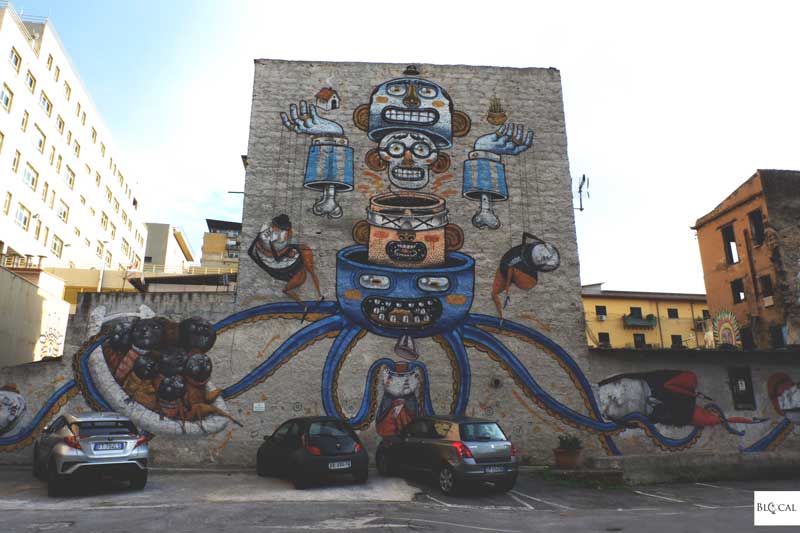
More large-scale pieces can be found in this parking lot: a big one by Corn79 and Mrfijodor, who tributed Pippo Fava, a journalist killed by the mafia, and more murals by Hunto, DMS and Rosk. They were all painted in 2013.
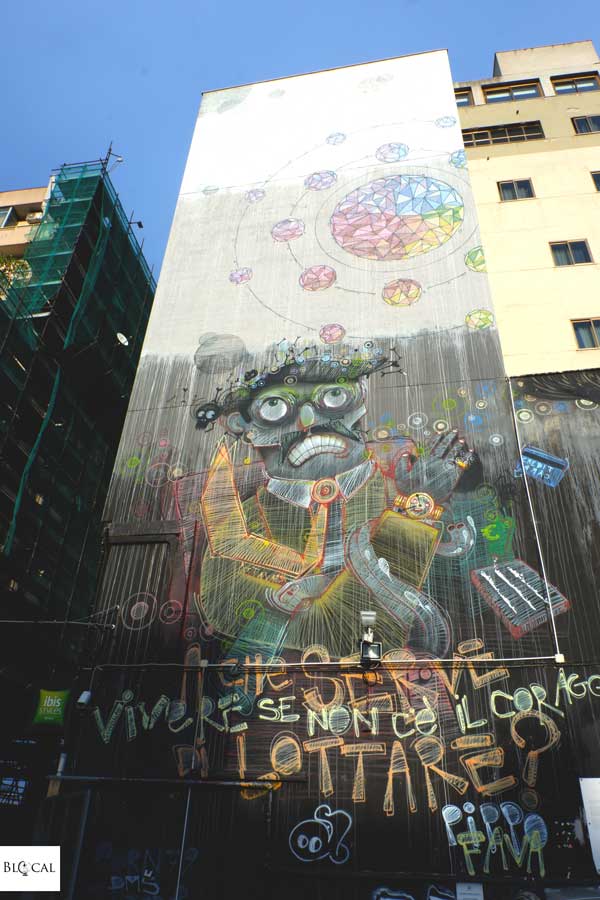
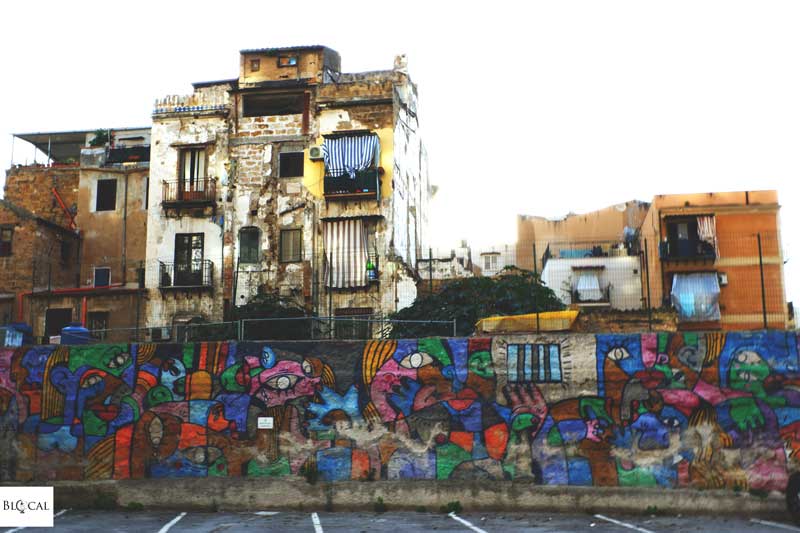
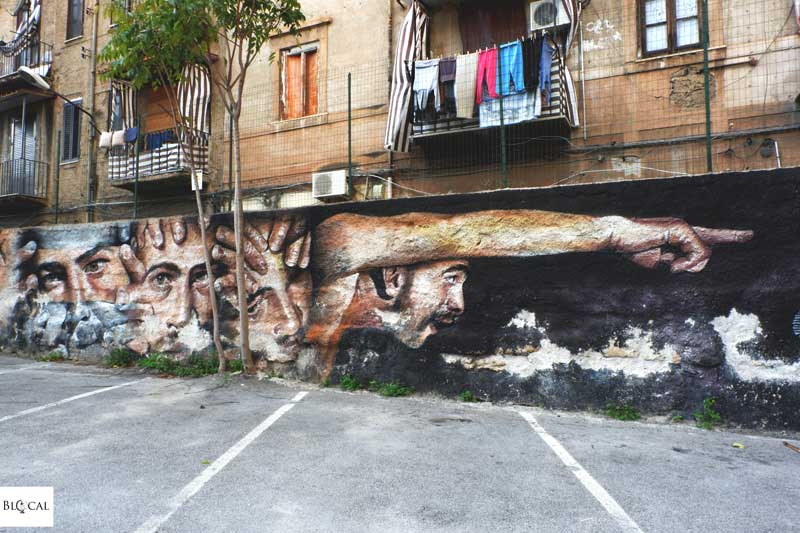
Moreover, on a side wall of the hotel is a smaller piece by Zed1 and a rare letter piece by Mr. Thoms right next to the colorful artwork by Hunto.
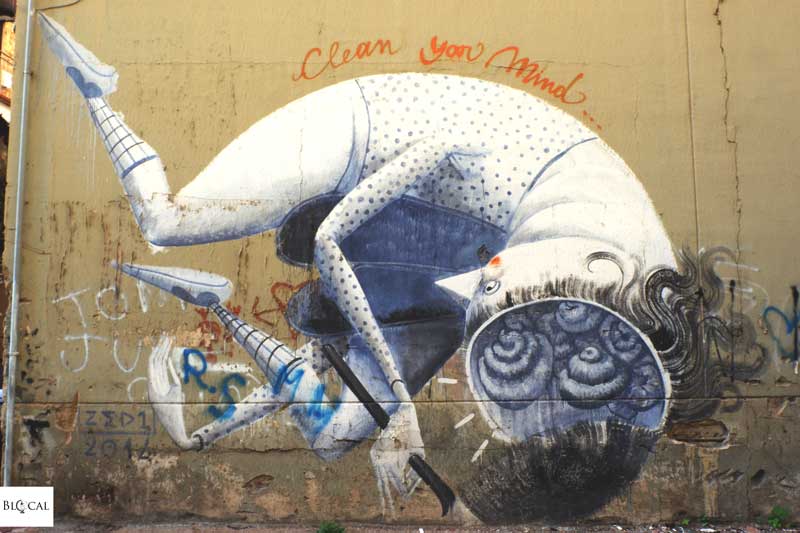
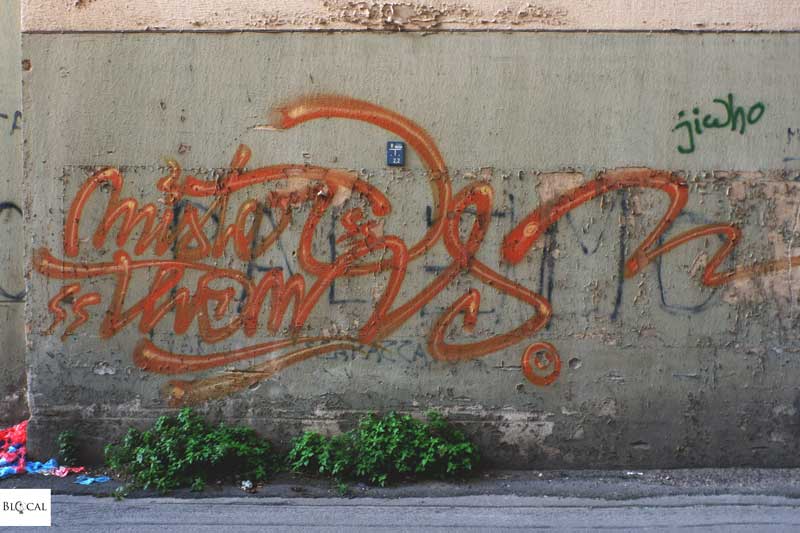
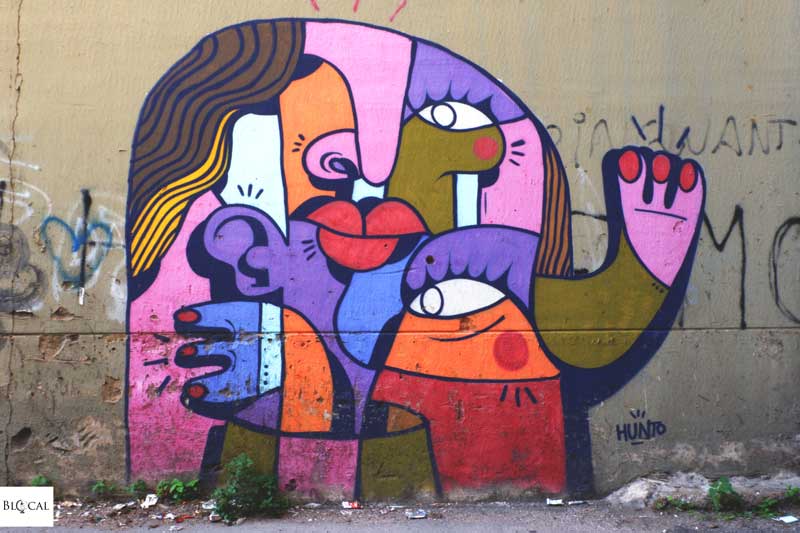
Eating out in Borgo Vecchio
- Osteria Lo Bianco – traditional restaurant specializing in Palermitan cuisine.
Street Art in Palermo > Cantieri Culturali alla Zisa
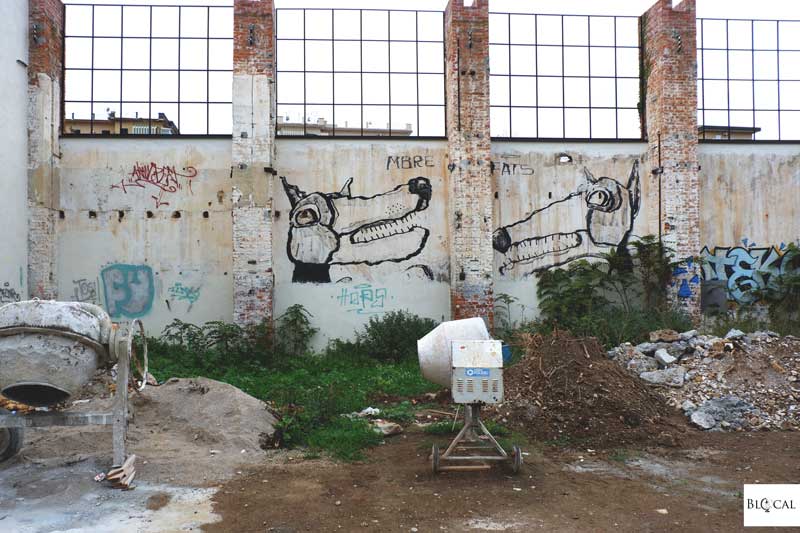
Once a furniture factory, this industrial archaeological area hosts many cultural activities today, ranging from theatre to cinema and music. I ventured here to see the exhibition of Zerocalcare’s works, which I regrettably missed when I was back in Rome last Christmas.
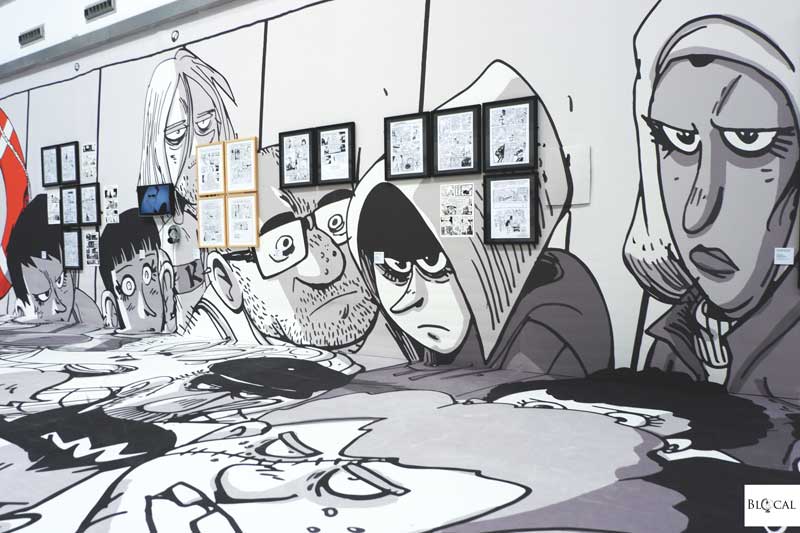
The show was great, and it gave me the opportunity to wander around this huge post-industrial complex, which is also home to Palermo’s Fine Arts Academy among many other cultural institutions. It goes without saying that it is full of street art, such as a skull by local tattoo artist Michele Zingales and a fairy tale piece by Mangiatori di Patate, where a fox lectures a rabbit about Palermo’s cultural policies.
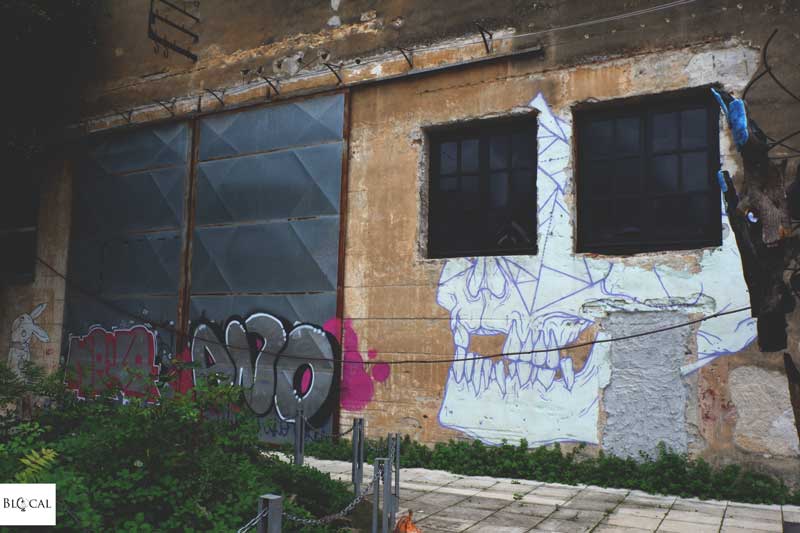
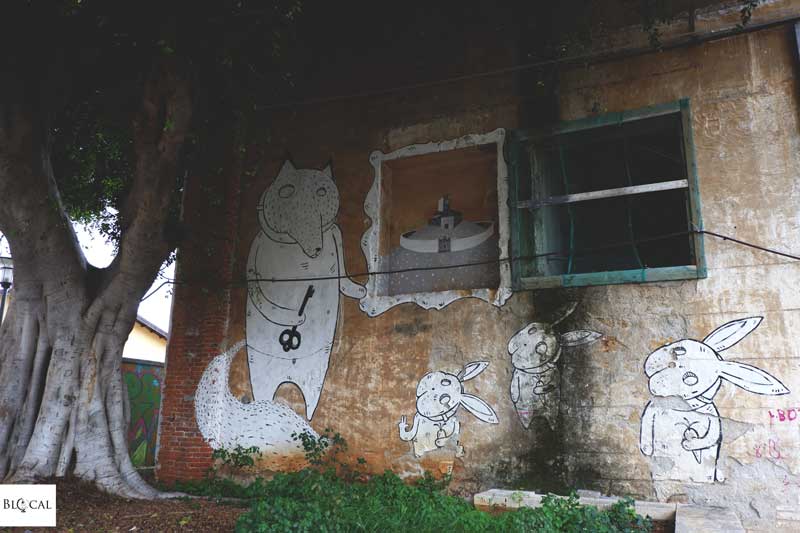
Trust me, if easier if you use my Palermo Google Map!
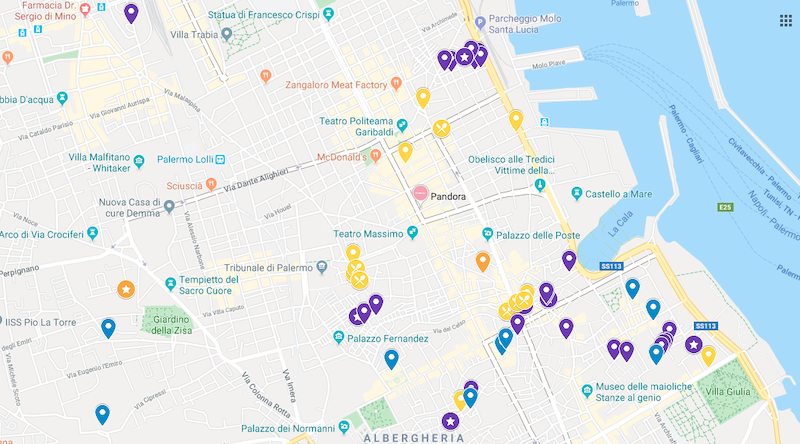


On and off the walls, Palermo is authentic. You’ll never be served frozen fish or ready-made couscous, and “progress” is regarded with suspicion—be it a mural festival, modern heating, or cars produced within this century. This anachronistic charm, which enchants me even more now that I live in the ultramodern North of Europe, is the aspect of the city that resonated the most with me during my holiday. My eyes feasted on the chaotic patterns in the streets, the voices shouting from one window to another entertaining my ears as I winked to the 10-year old kid on a scooter who was clearly too young to drive while my mother yelled at him to put on a helmet.
I wanted to fill my eyes and my heart with all that chaos, which I miss in a city seemingly functioning and dreadfully dull, where everything is over-regulated and people don’t talk anymore with each other in the street.
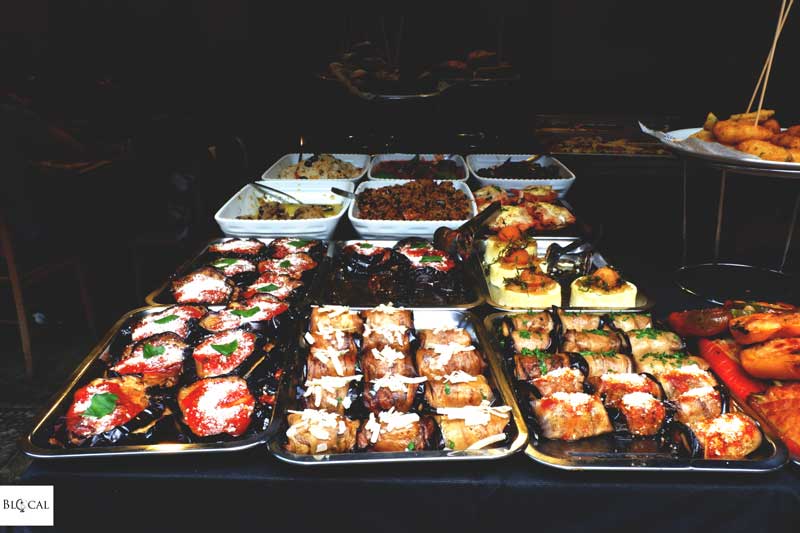
I wanted to fill my mouth with all that food that tasted like food is supposed to. I was so carried away by all those vivid tastes that I kept gulping down food in no logical order. I always craved a second glass of Amara (a liqueur from Sicilian oranges), but it was a street smelling of biscuits or grilled calamari that would prompt my itinerary.
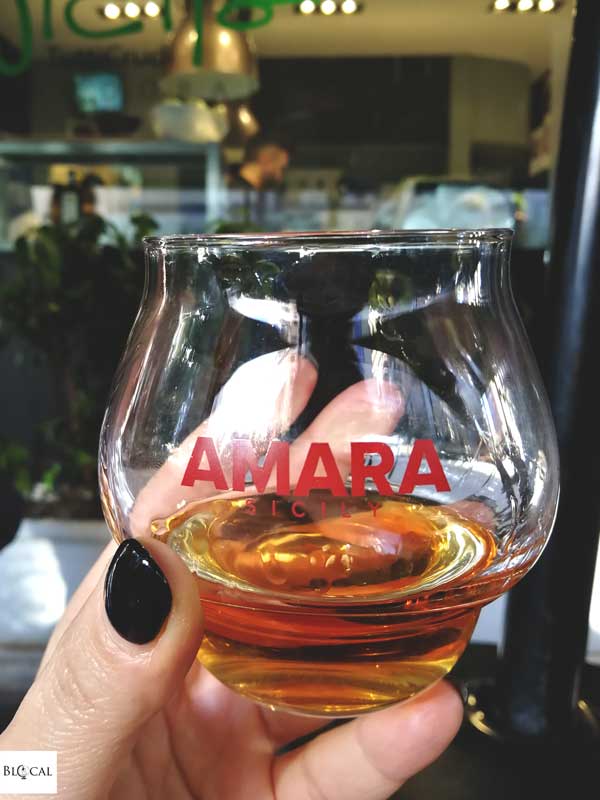
On Saturday night, I had a walk around the city center. All the shutters I’ve usually found closed were now wide open on crowded bars, where drinks are cheap and people drink them outside. They talked loudly with that cut-off accent that reminds me of a music beat. I looked at them with nostalgia, so eager to resemble the gluttony I felt for the Sicilian food. The streets buzzed with a calm energy, which I found quintessentially Italian: the soul of unpretentious nights spent with friends drinking wine from plastic cups, leaning against parked cars. The air would progressively cool, yet never go under 20°C. Eventually, the street will swarm with the aromas coming from a bakery and people will start knocking on Palermo’s spray-painted shutters to get a brioche that had just come out of the oven. God, I miss Italy.
More street art and other super cool things to see in Palermo
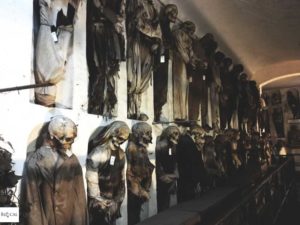
- Pizzo Sella Art Village – street artists painting on derelict villas seized from the Mafia;
- Danisinni – a neighbourhood with authentic street art;
- Catacombe dei Cappuccini – an impressive gallery showing the Sicilian tradition of mummification;
- Castello della Zisa – best preserved example of Arab-Norman architecture;
- Palazzo Chiaramonte-Steri – this palace used to host the tribunal of the Holy Inquisition. On the walls of its basement you can still see countless graffiti inscribed by its prisoners;
- Chiesa dello Spasimo – a roofless church that hosts cultural manifestations;
- CSOA Ex-Karcere – a squat place inside a former prison. Many street artists painted here!
- CSOA Teatro Mediterraneo Okkupato – a squat theatre inside an abandoned shed of Palermo’s old trade fair. Many street artists painted here!
Oh, wait, have you downloaded my Palermo Google Map?

Back in Palermo, two years later!
In this video, I bring you into the abandoned villas seized from the Mafia of Pizzo Sella Art Village, check it out:
